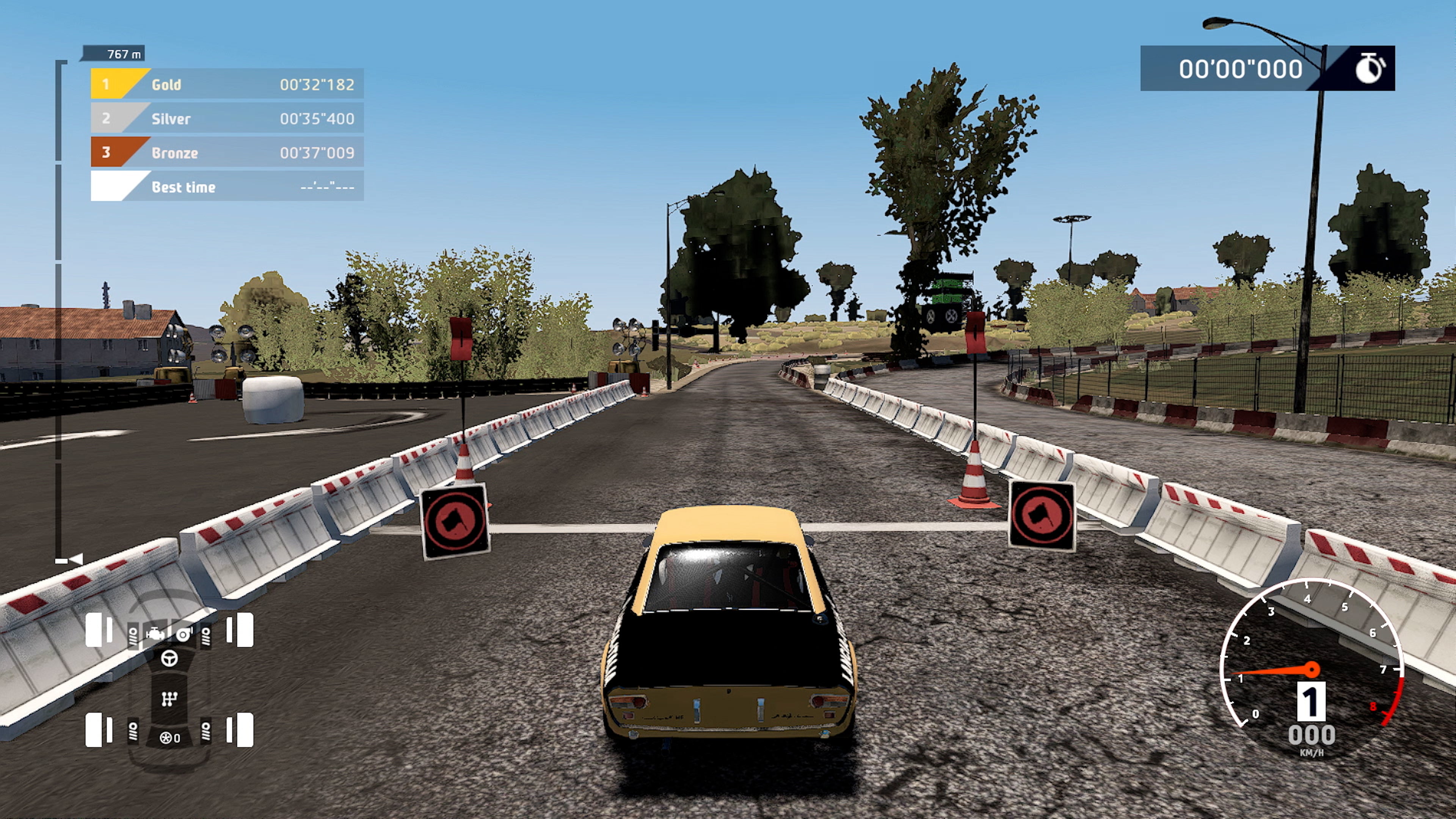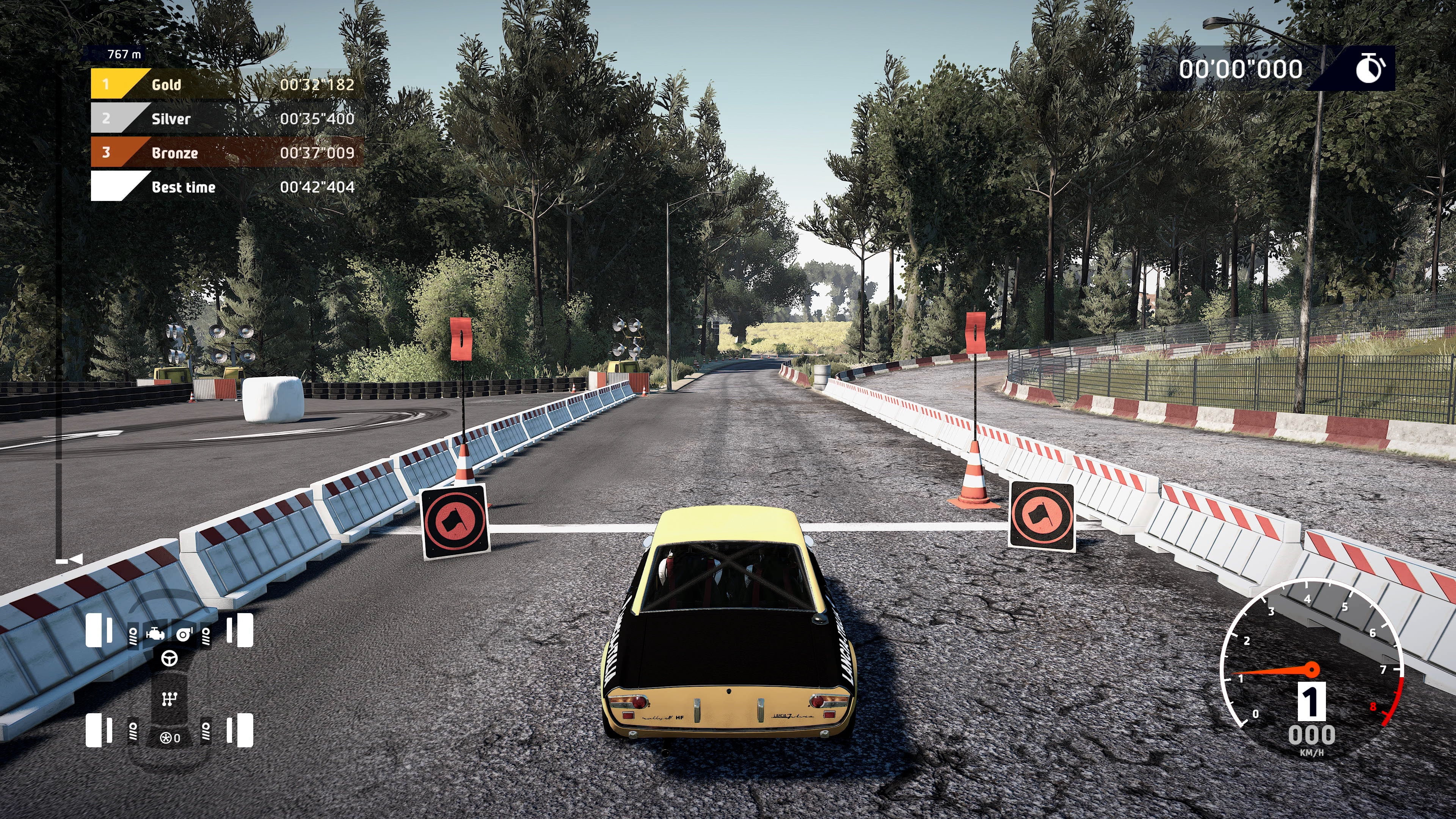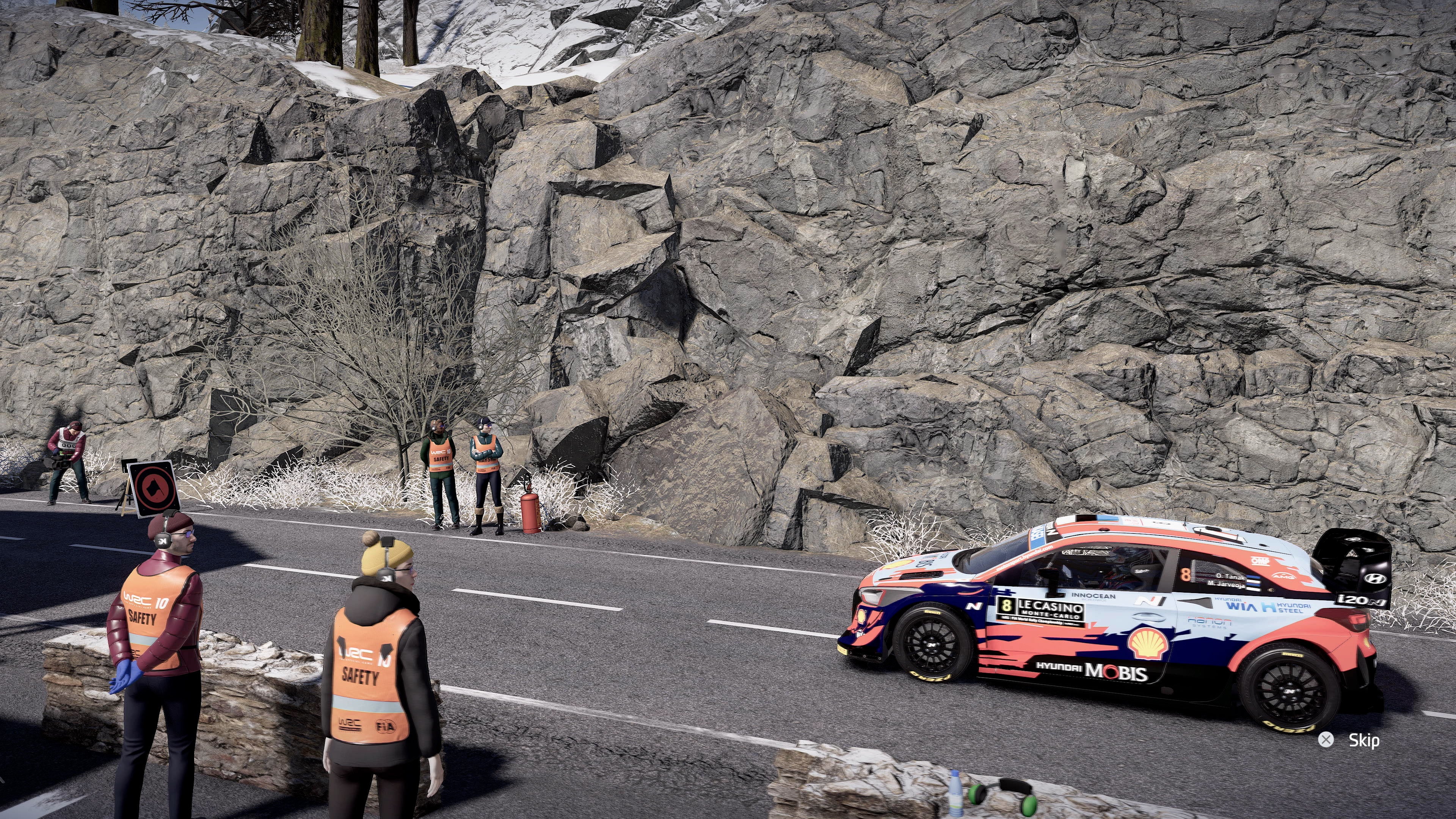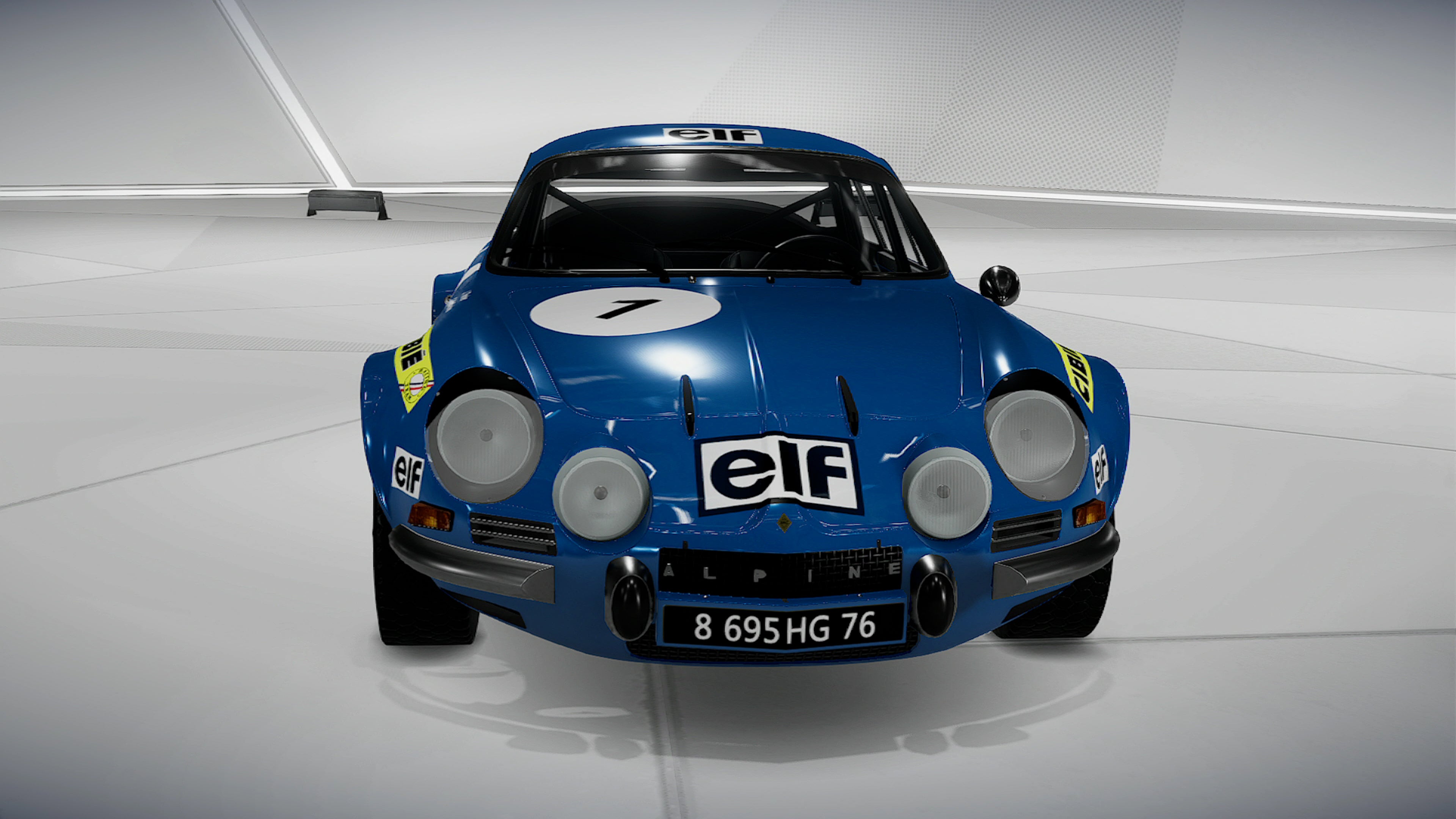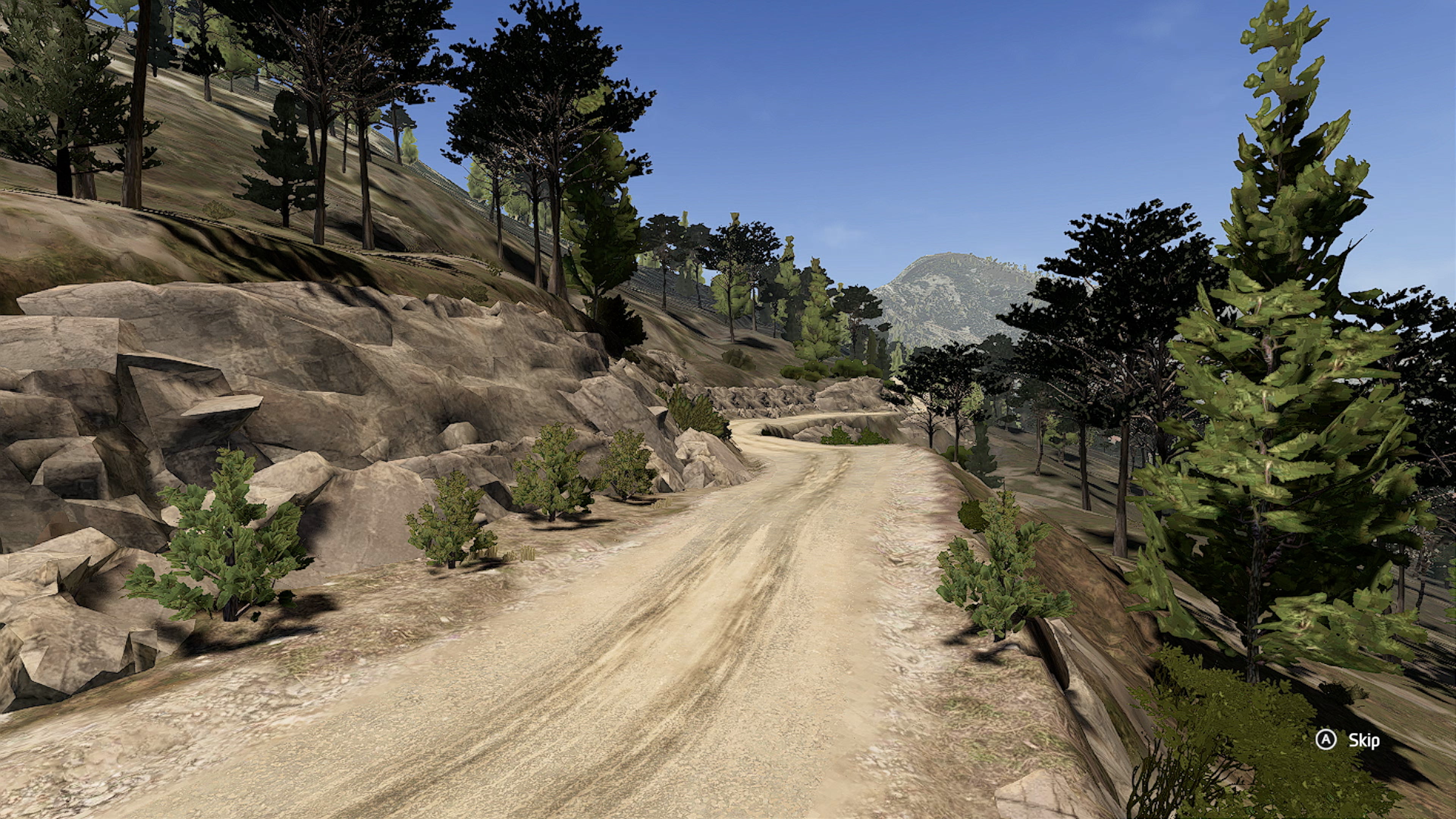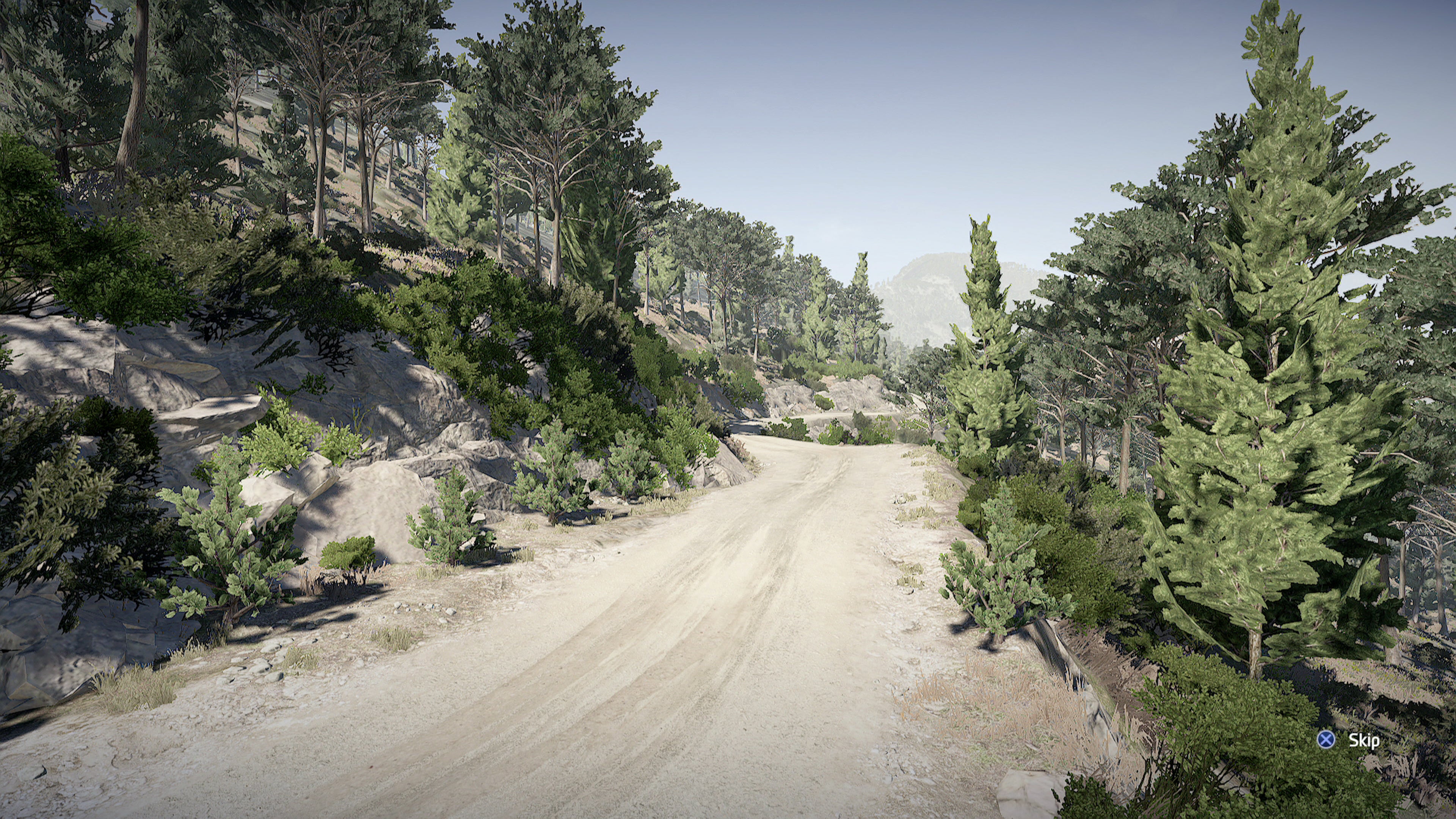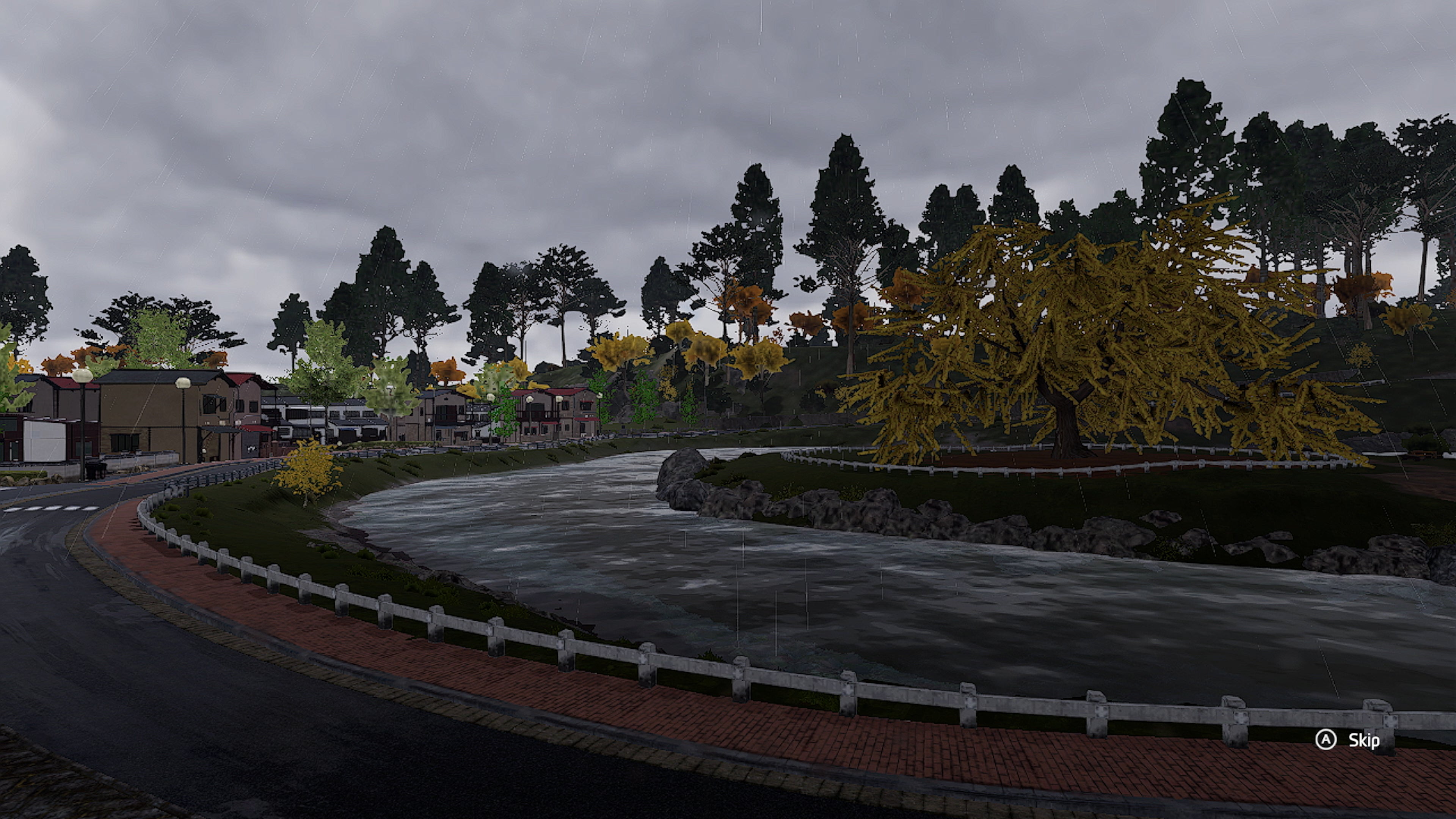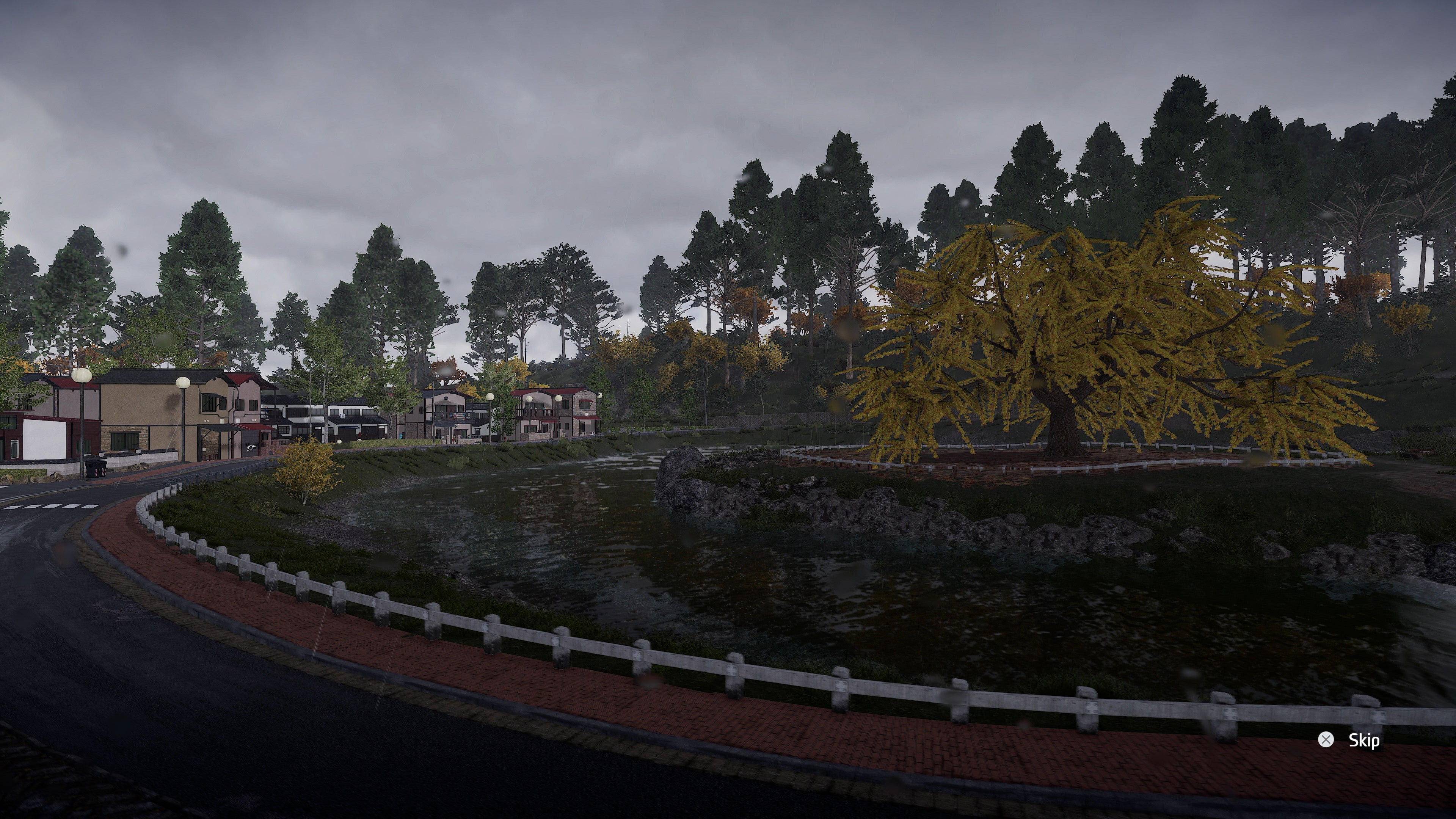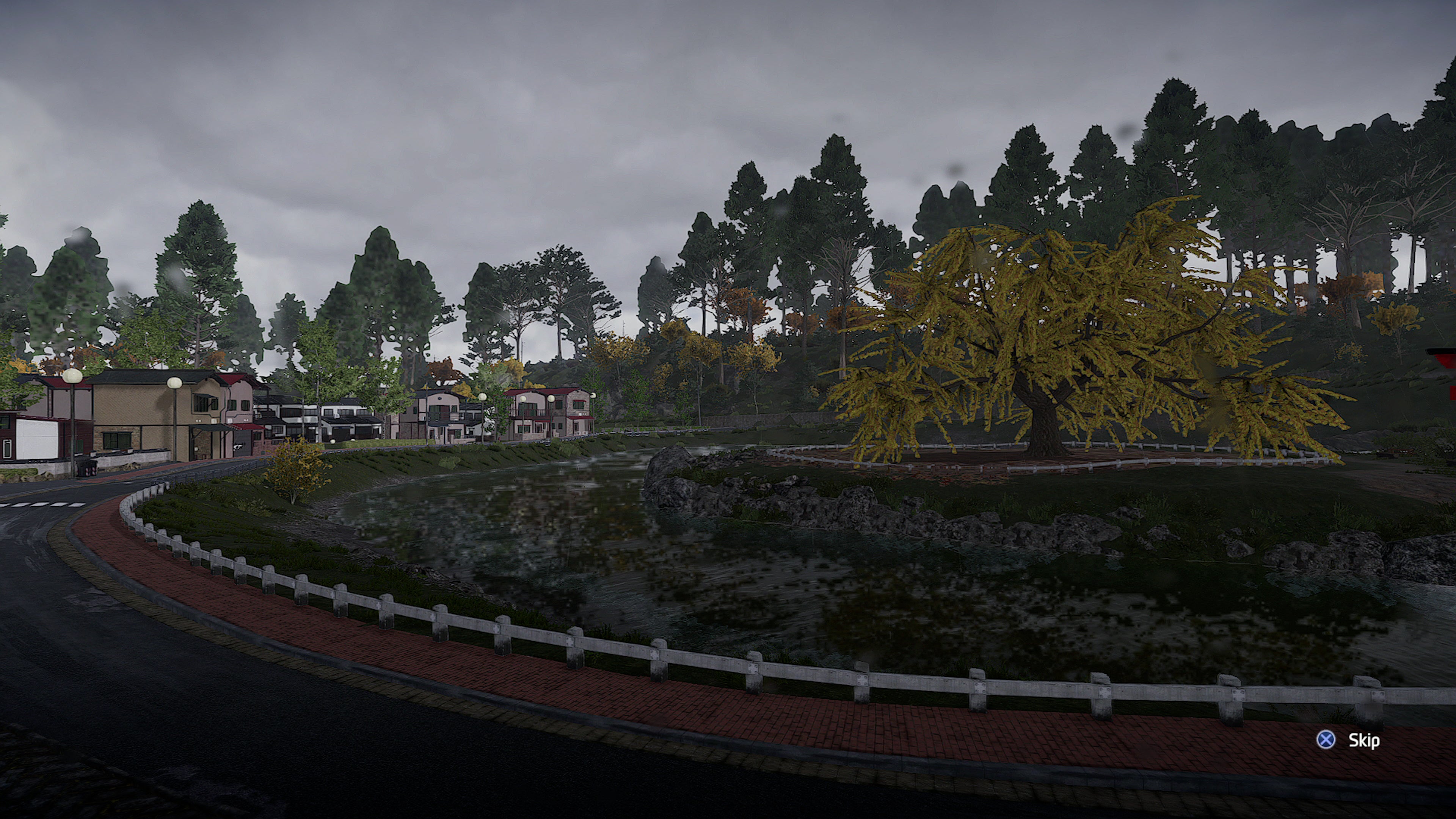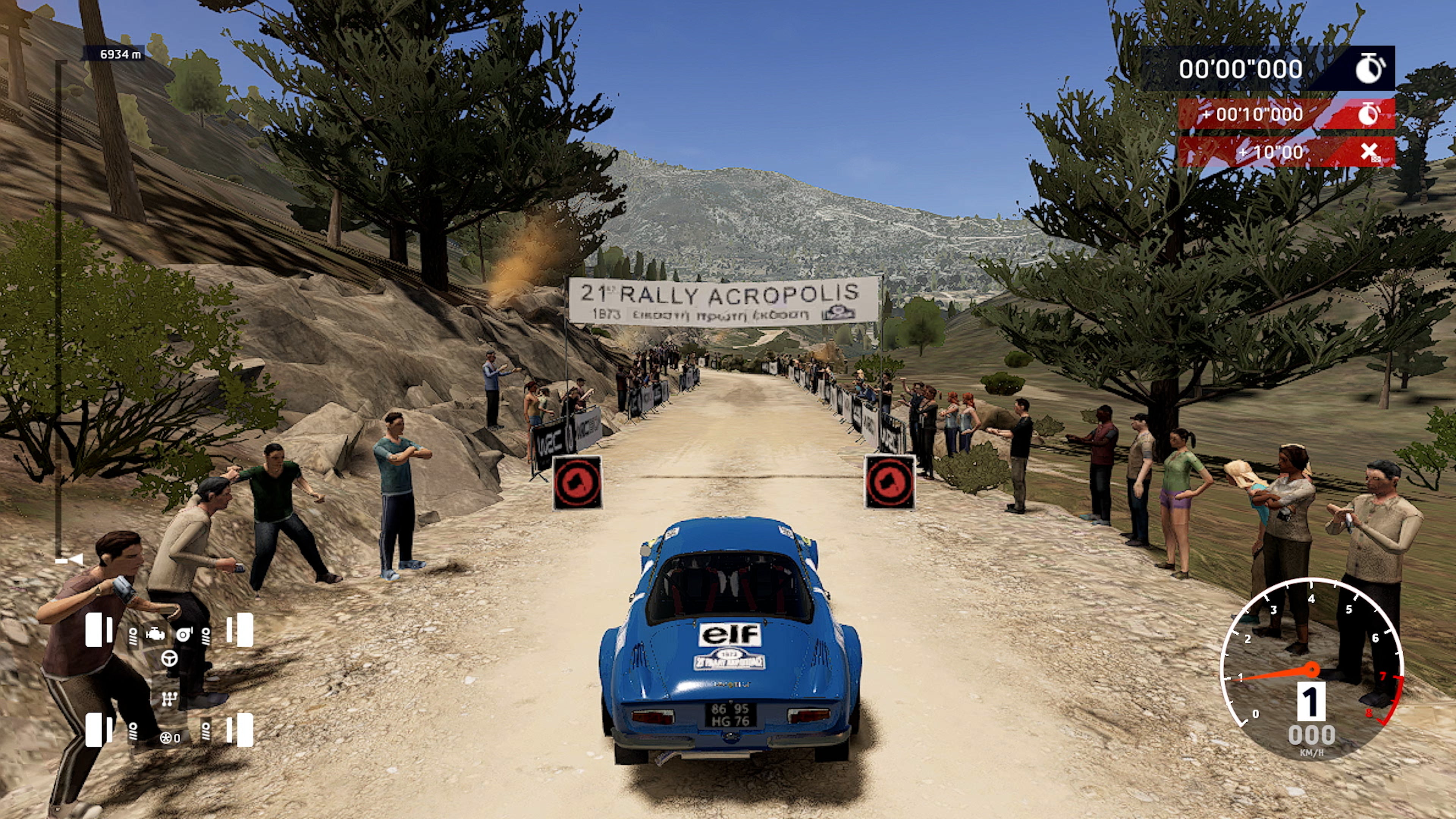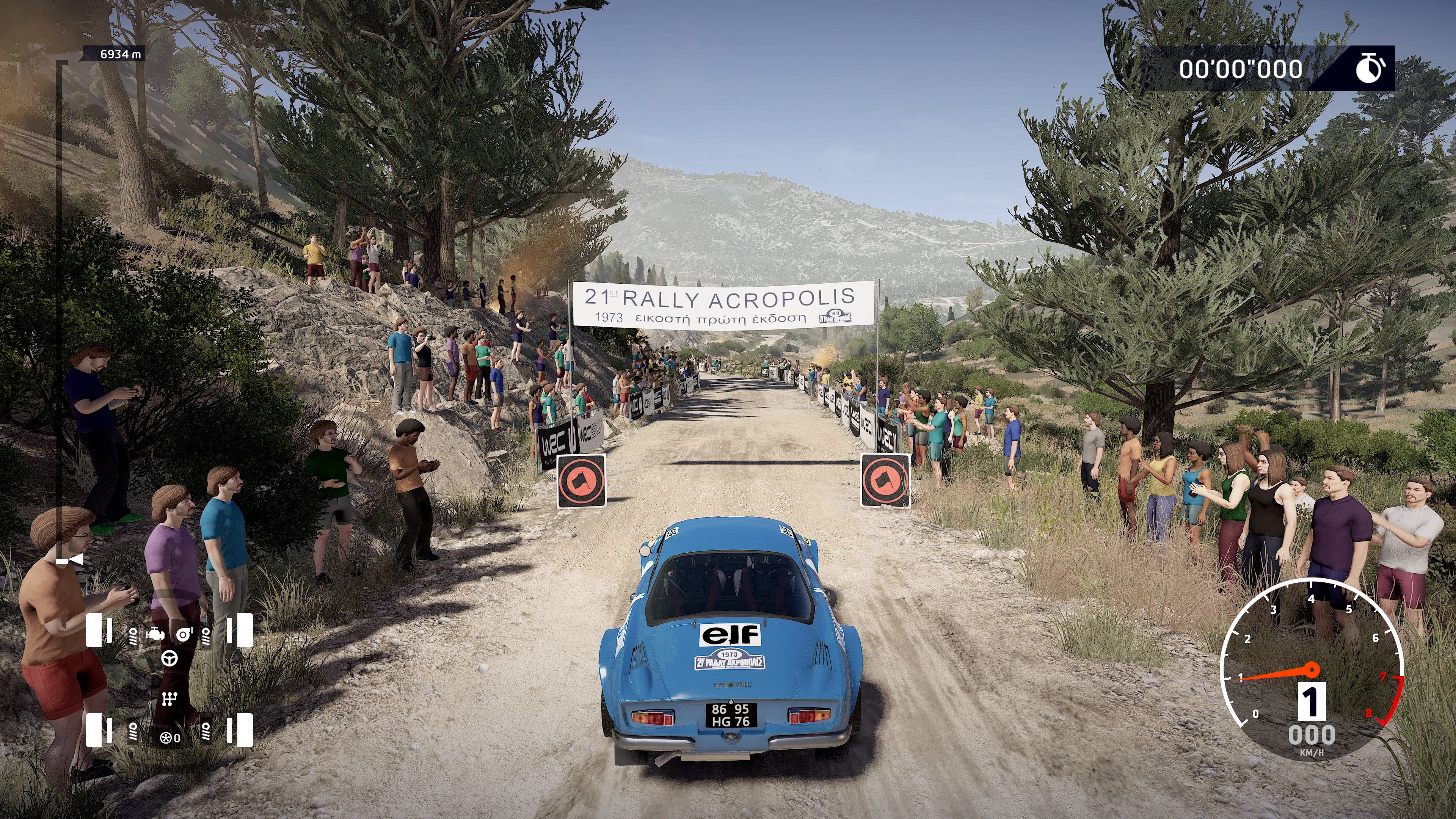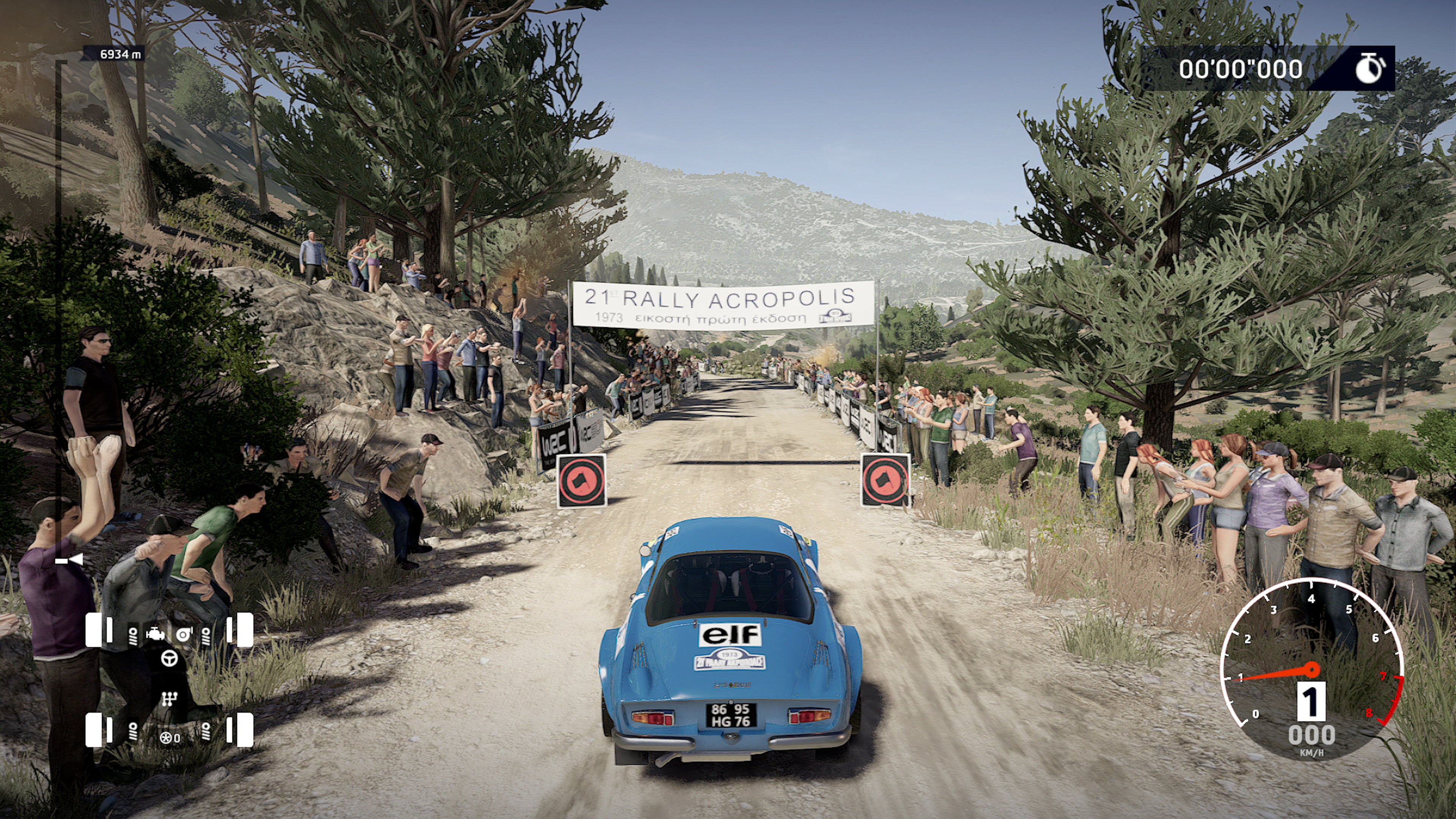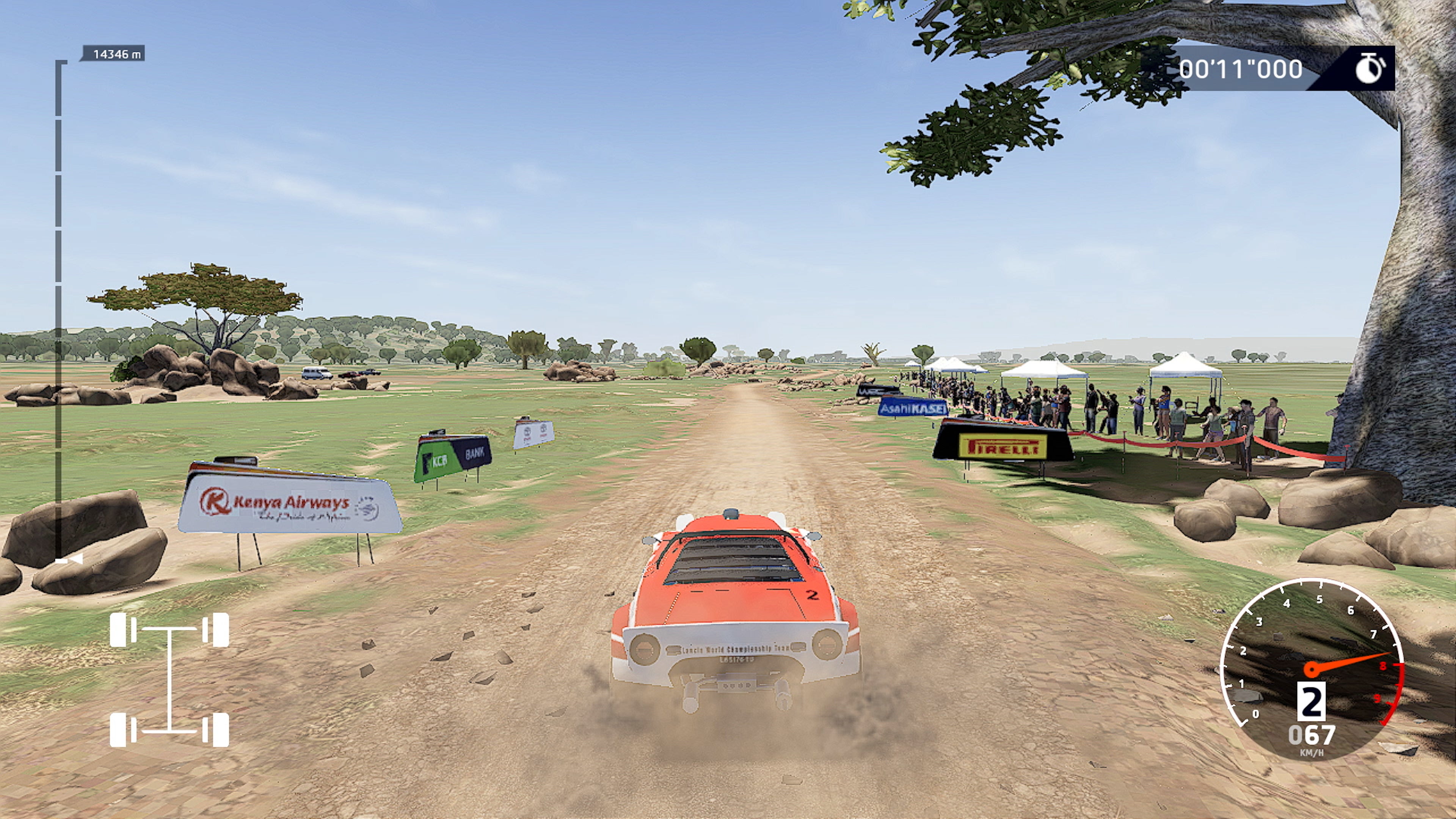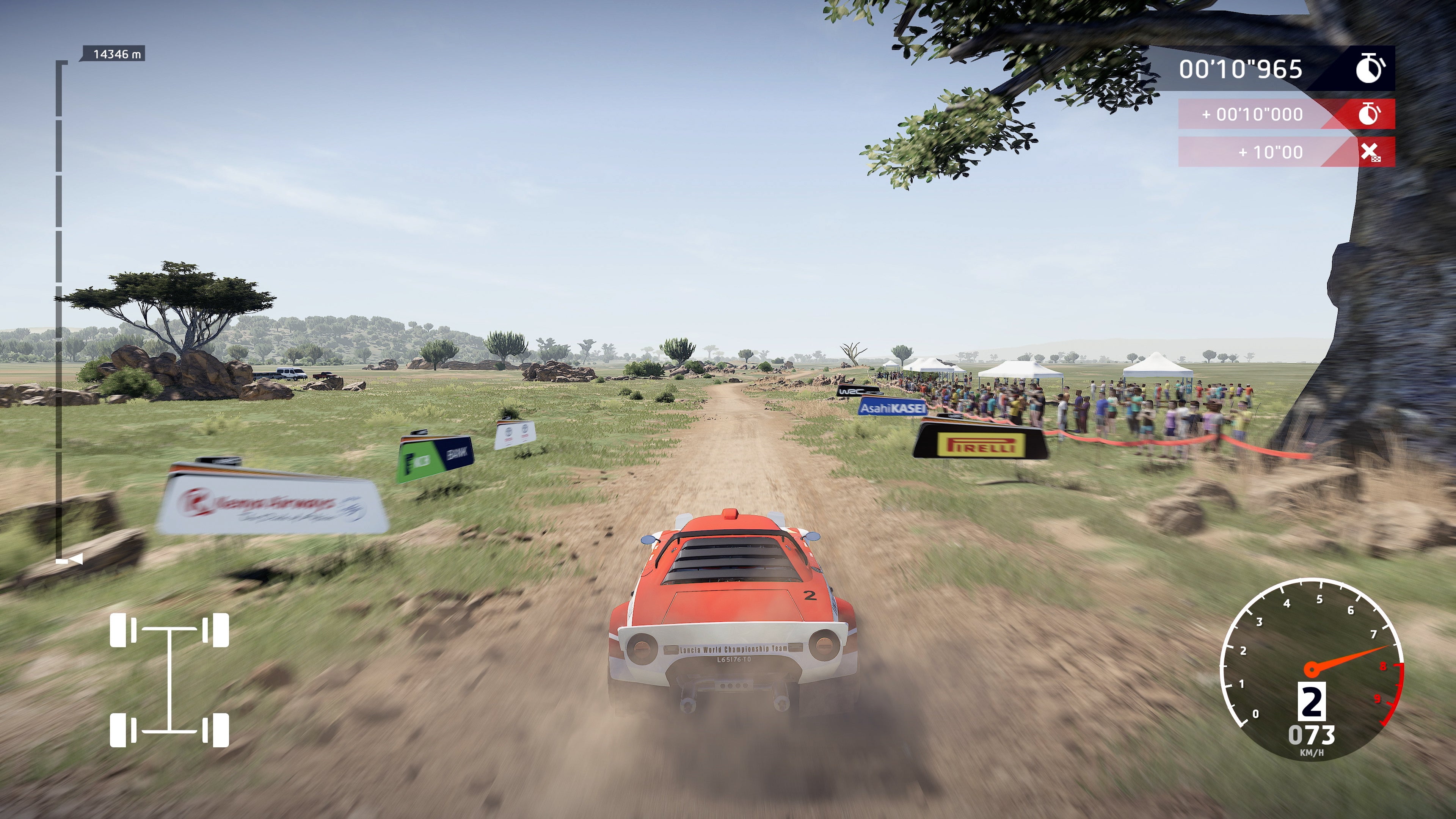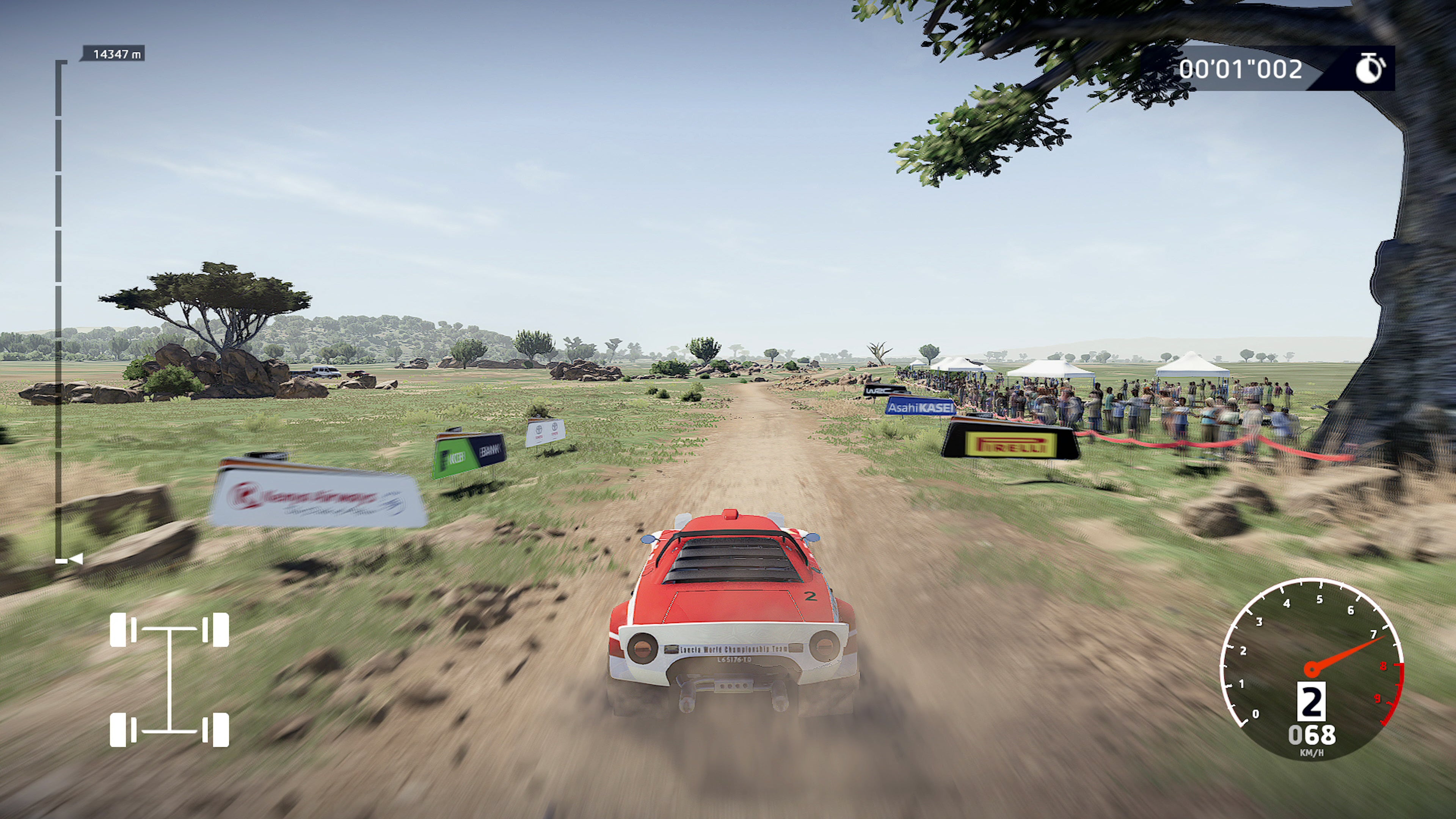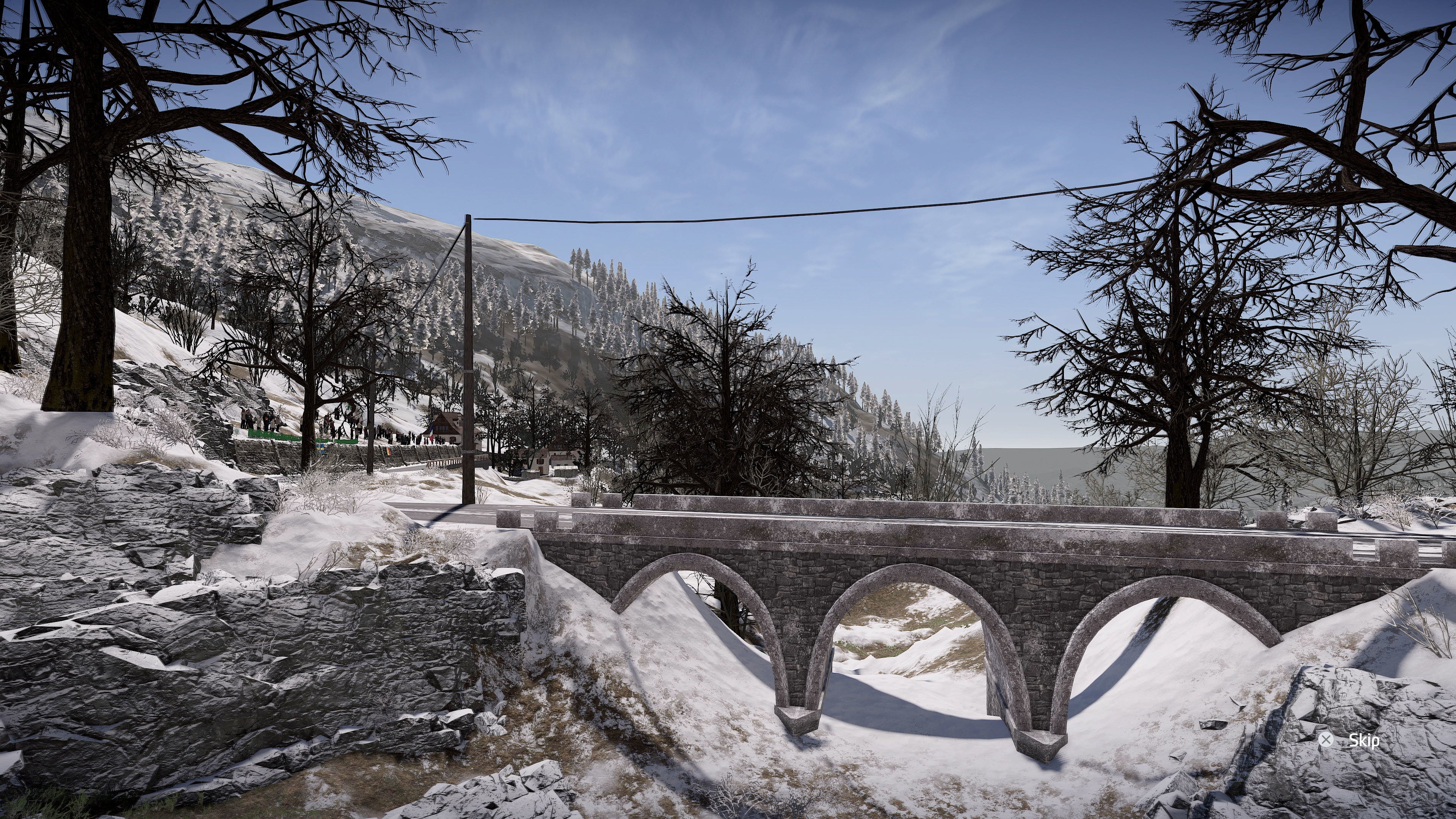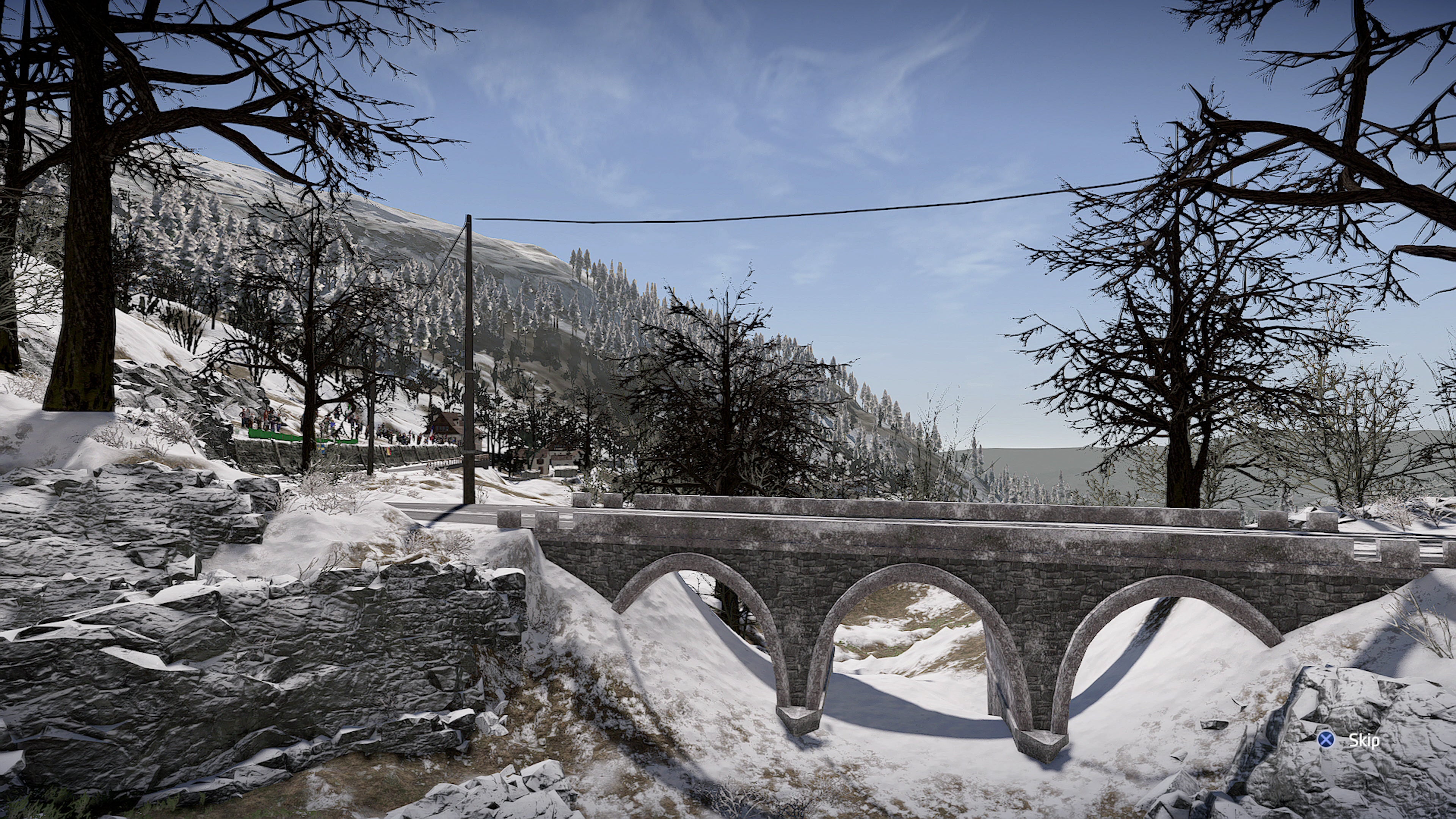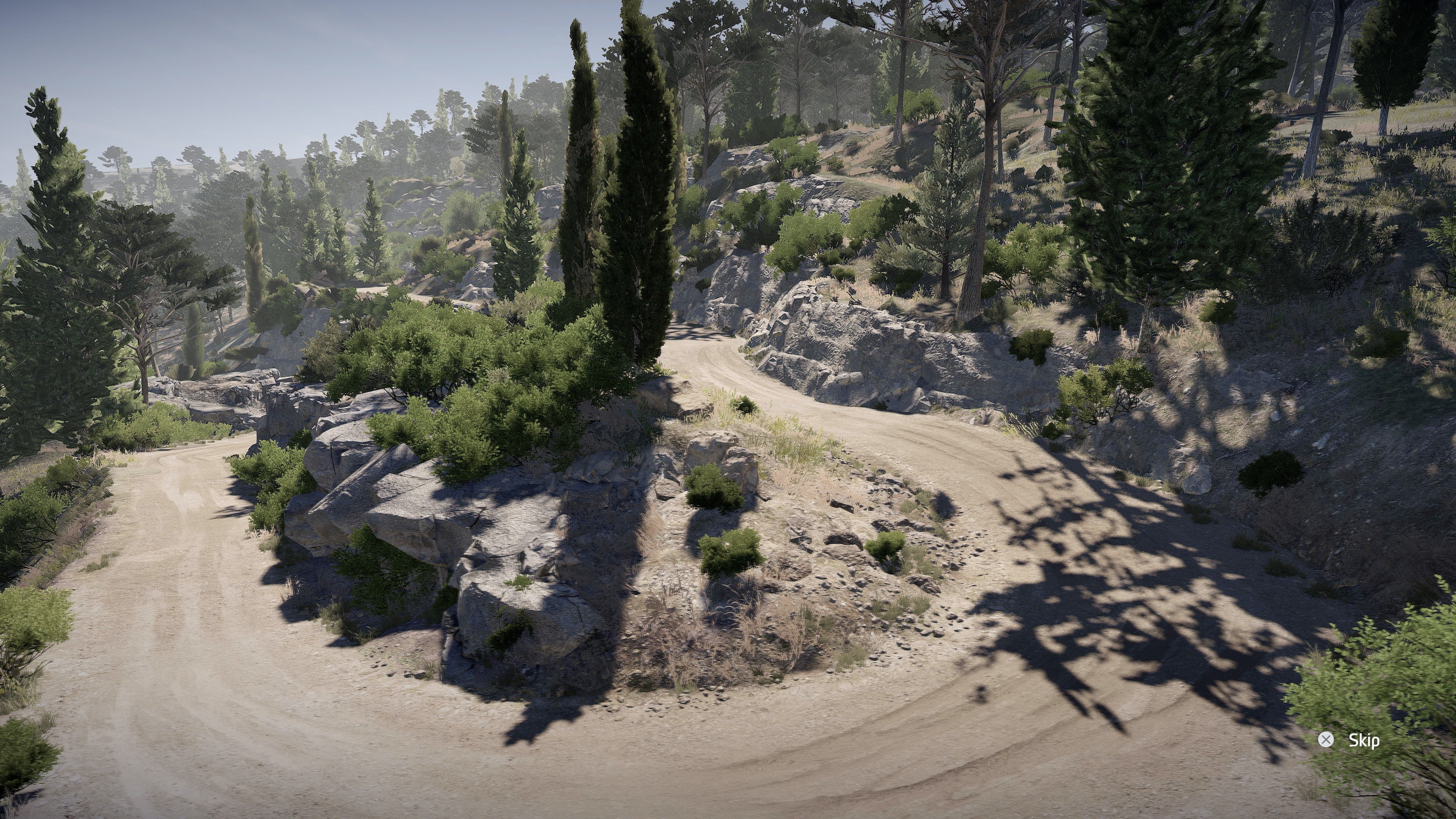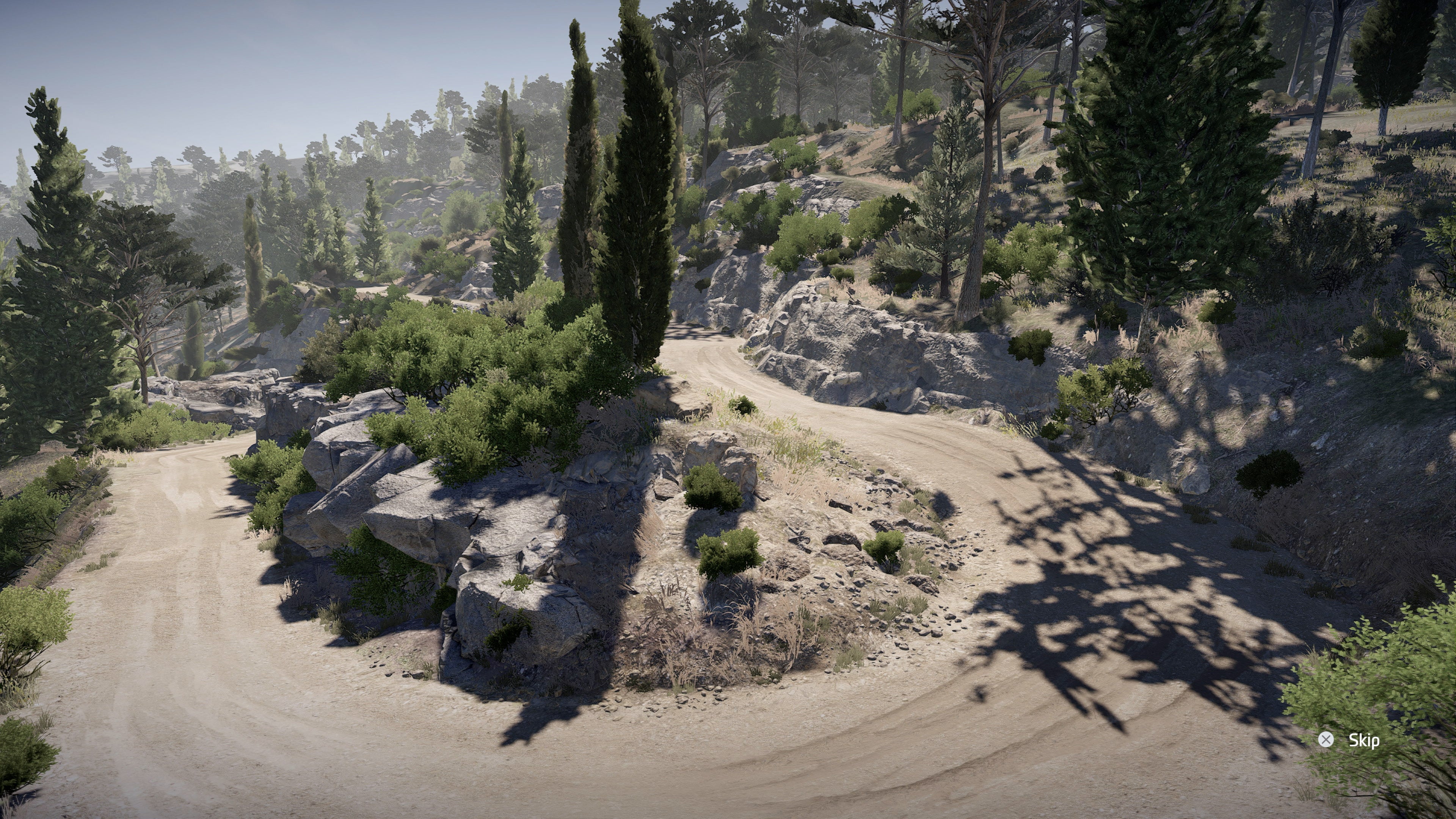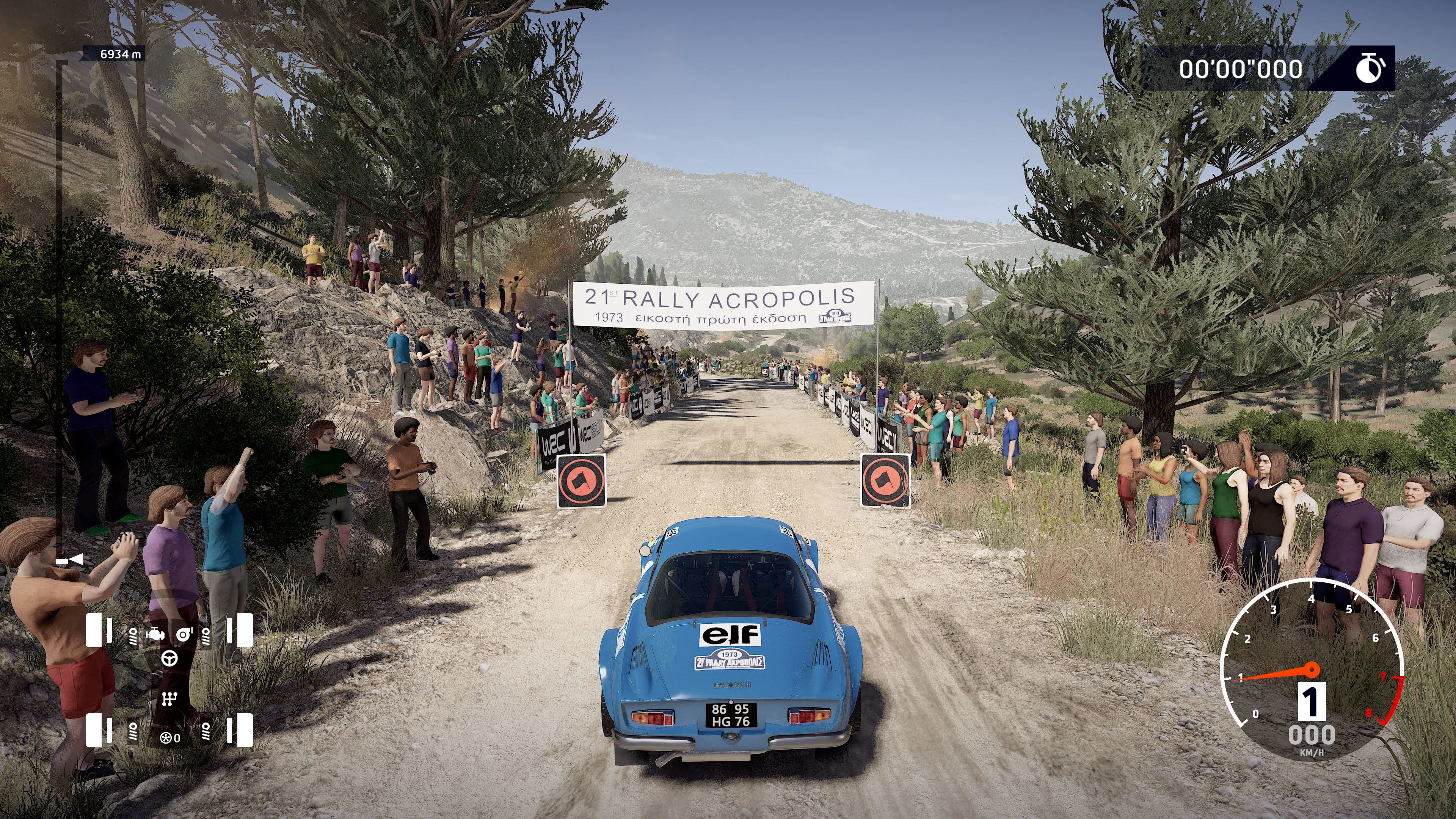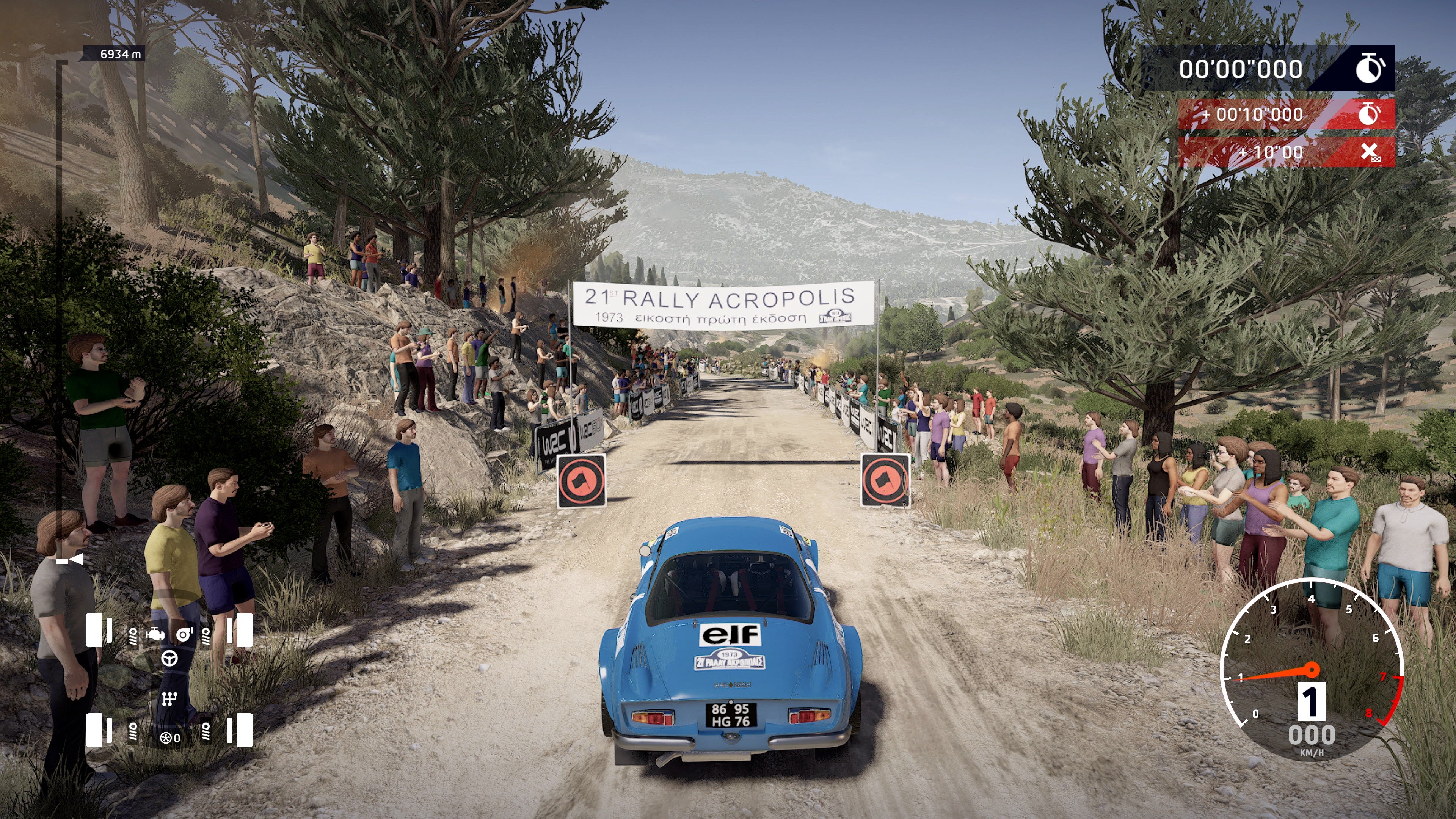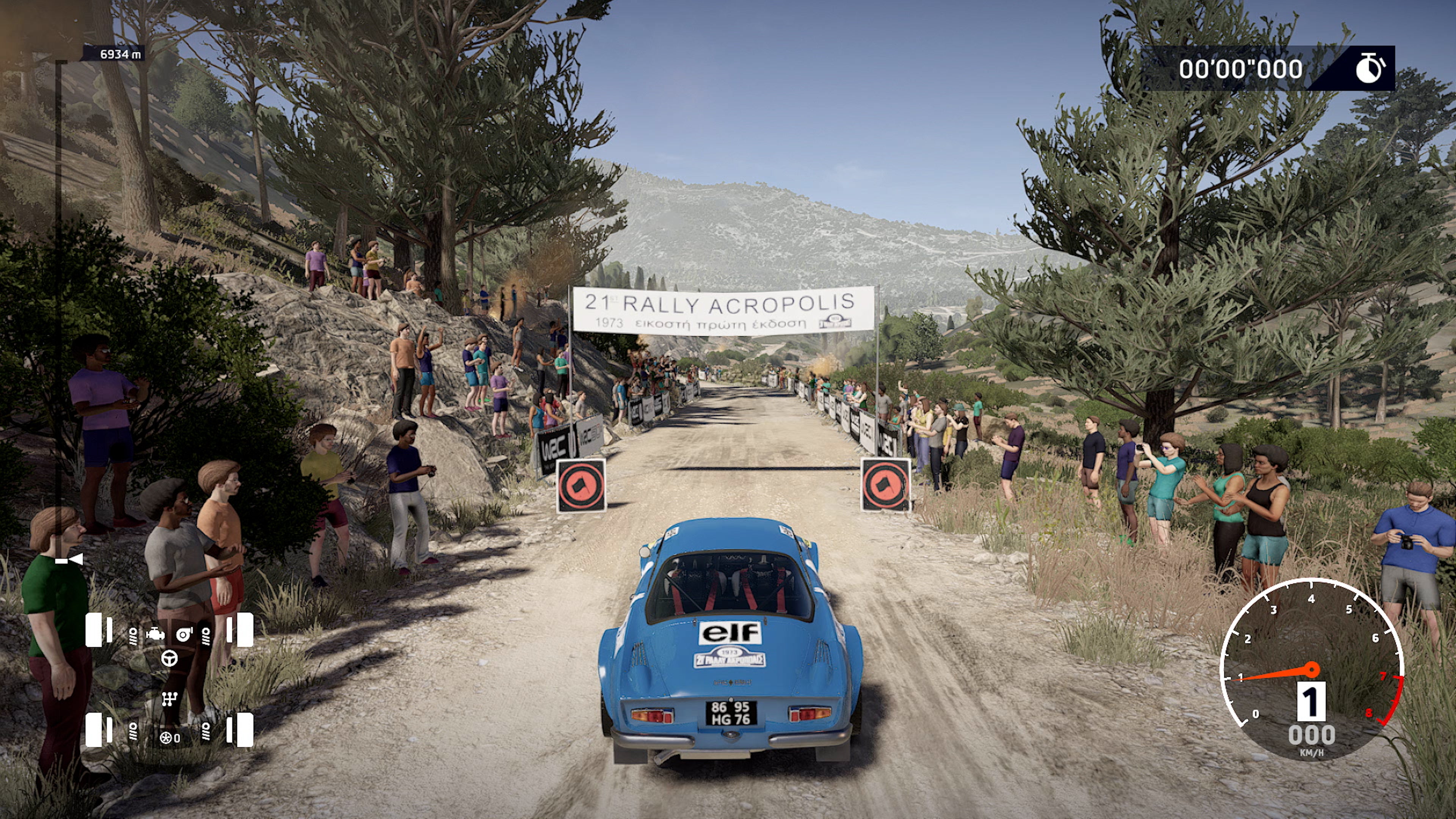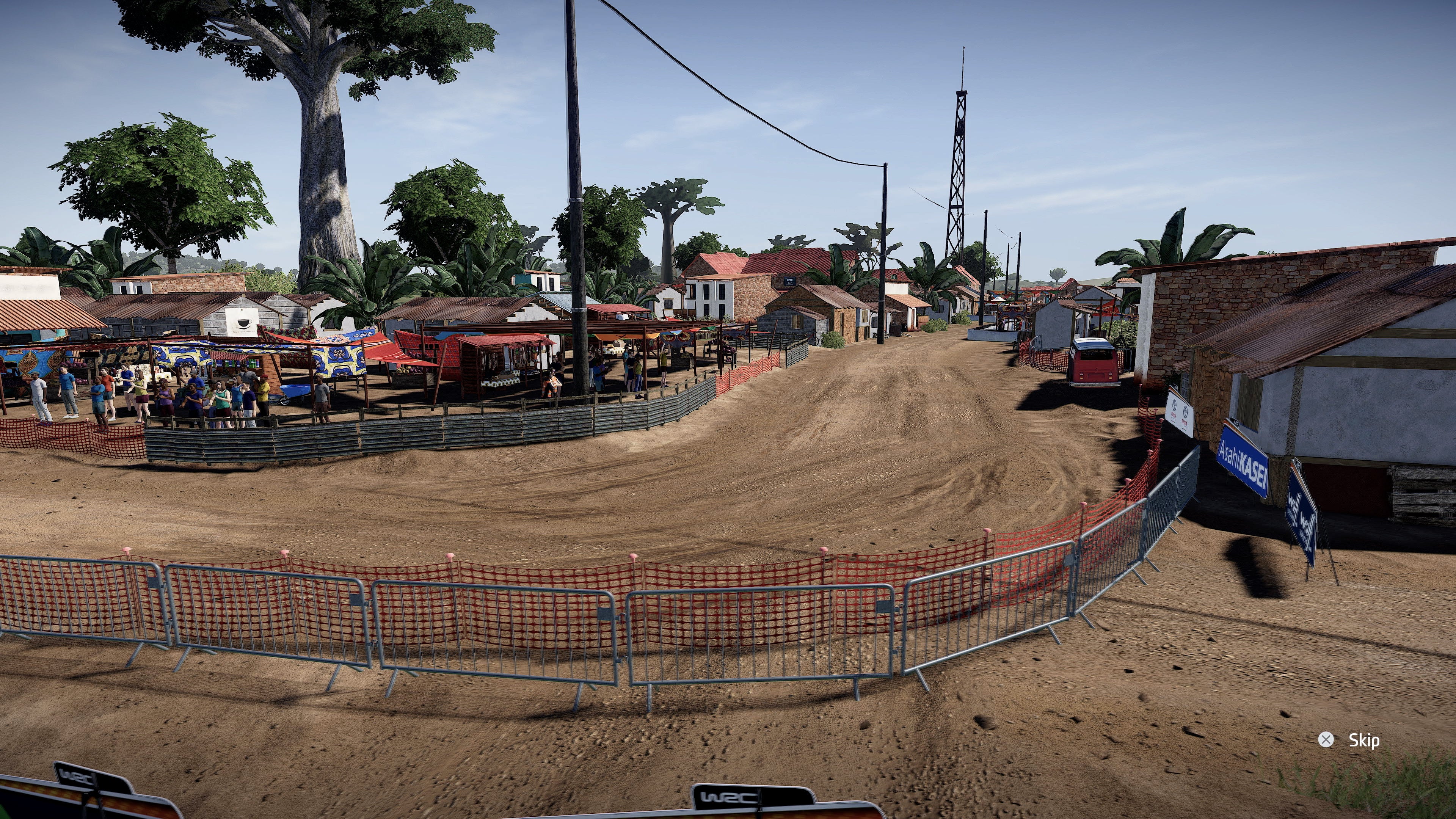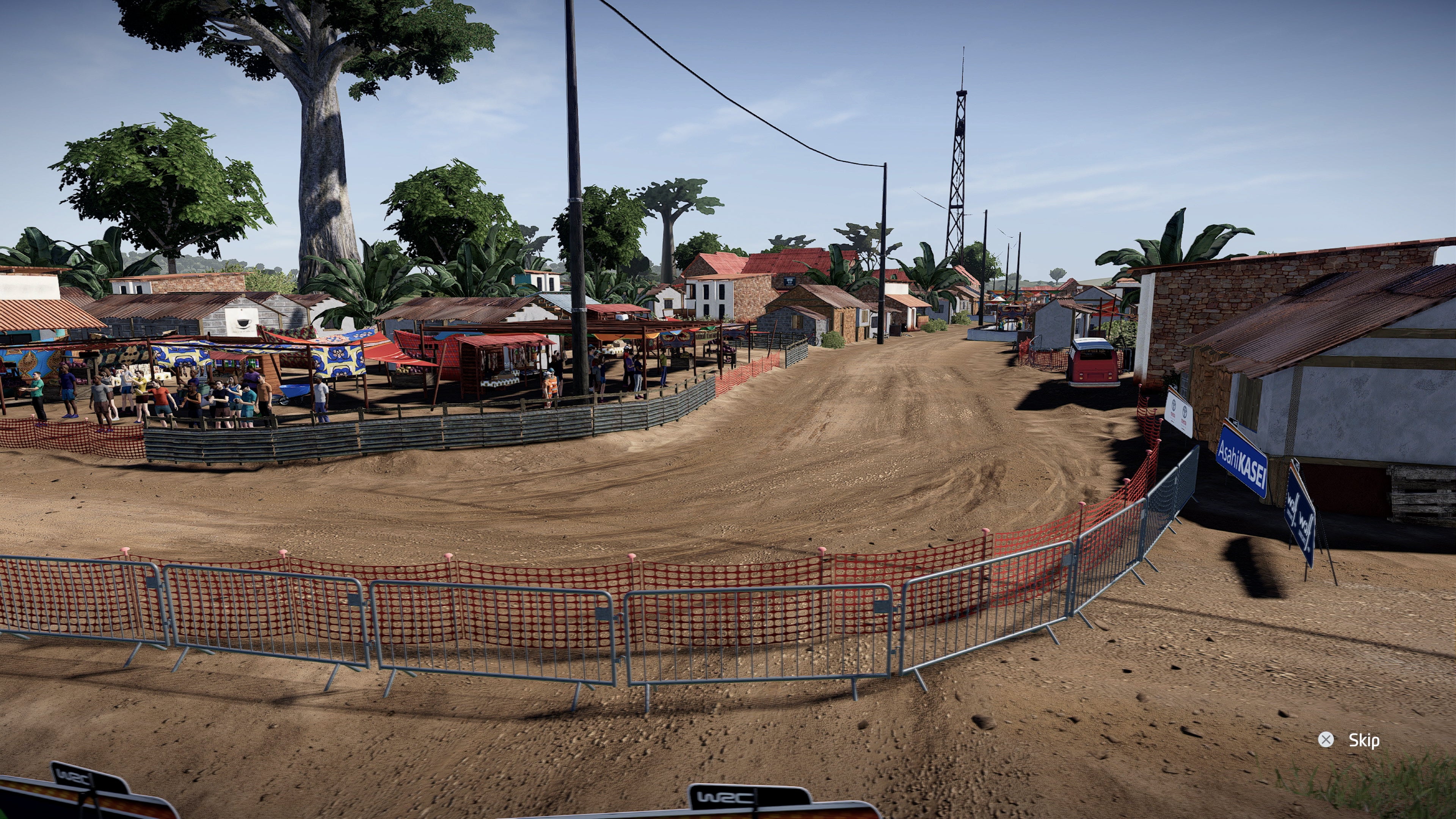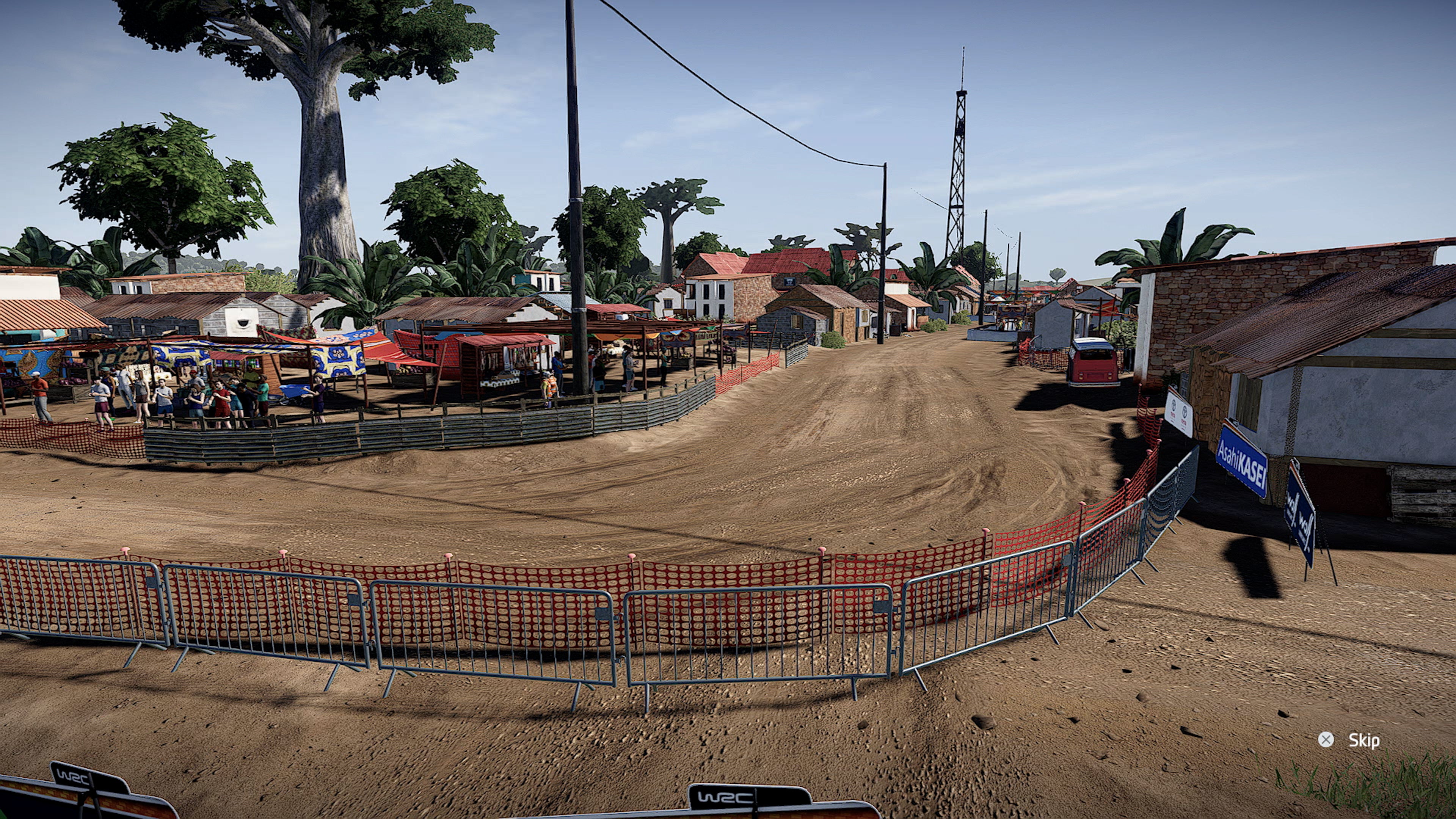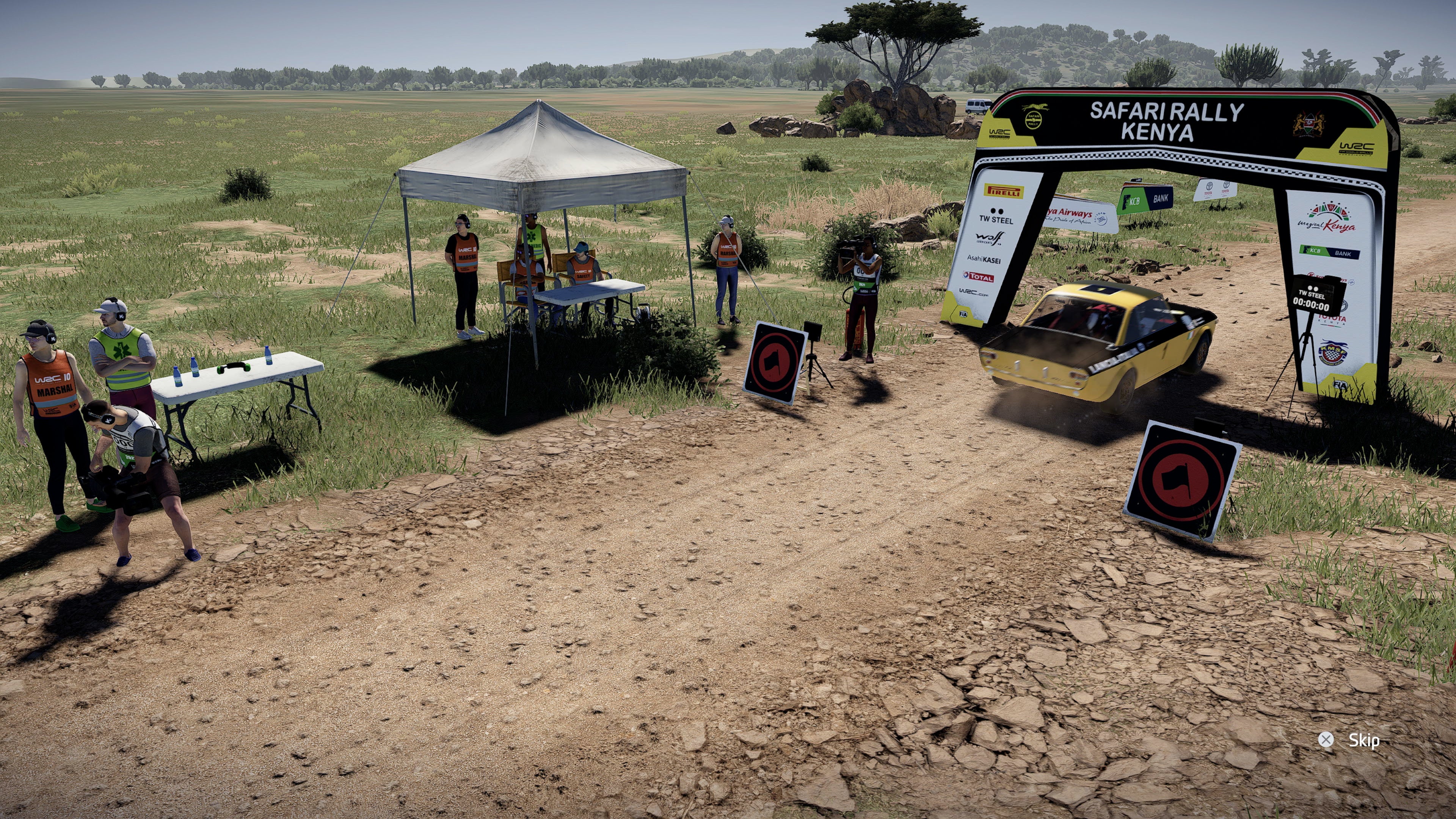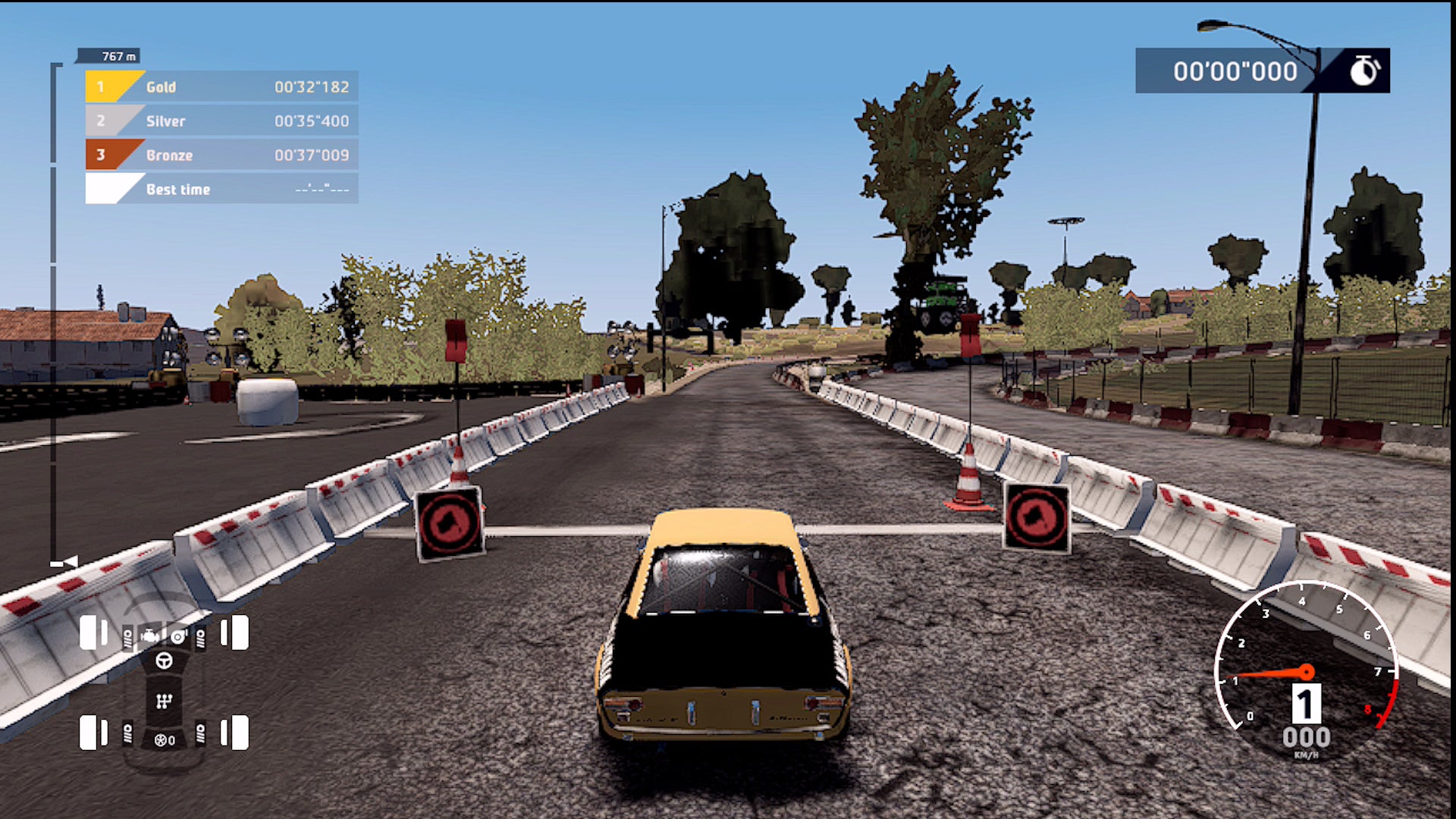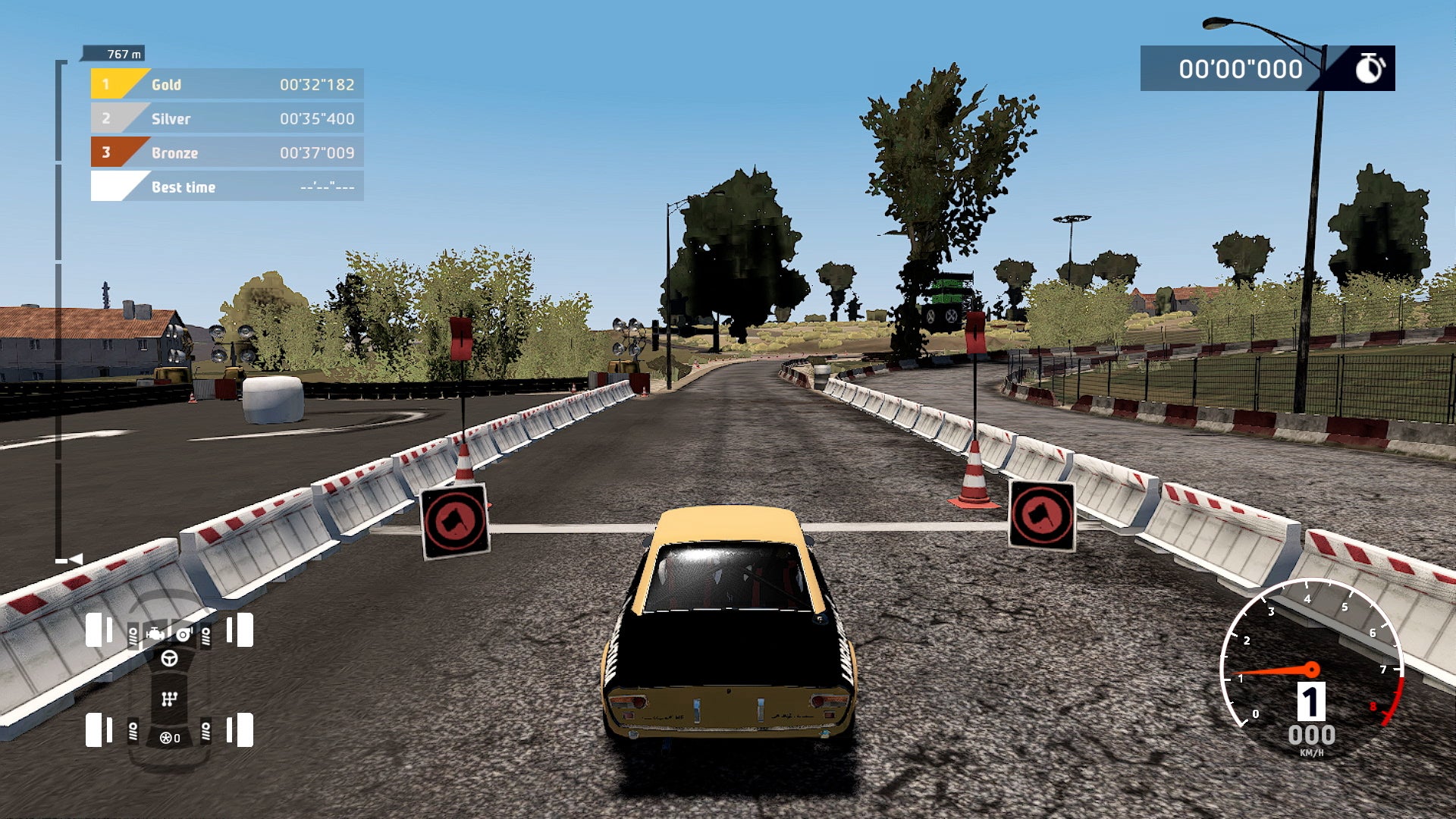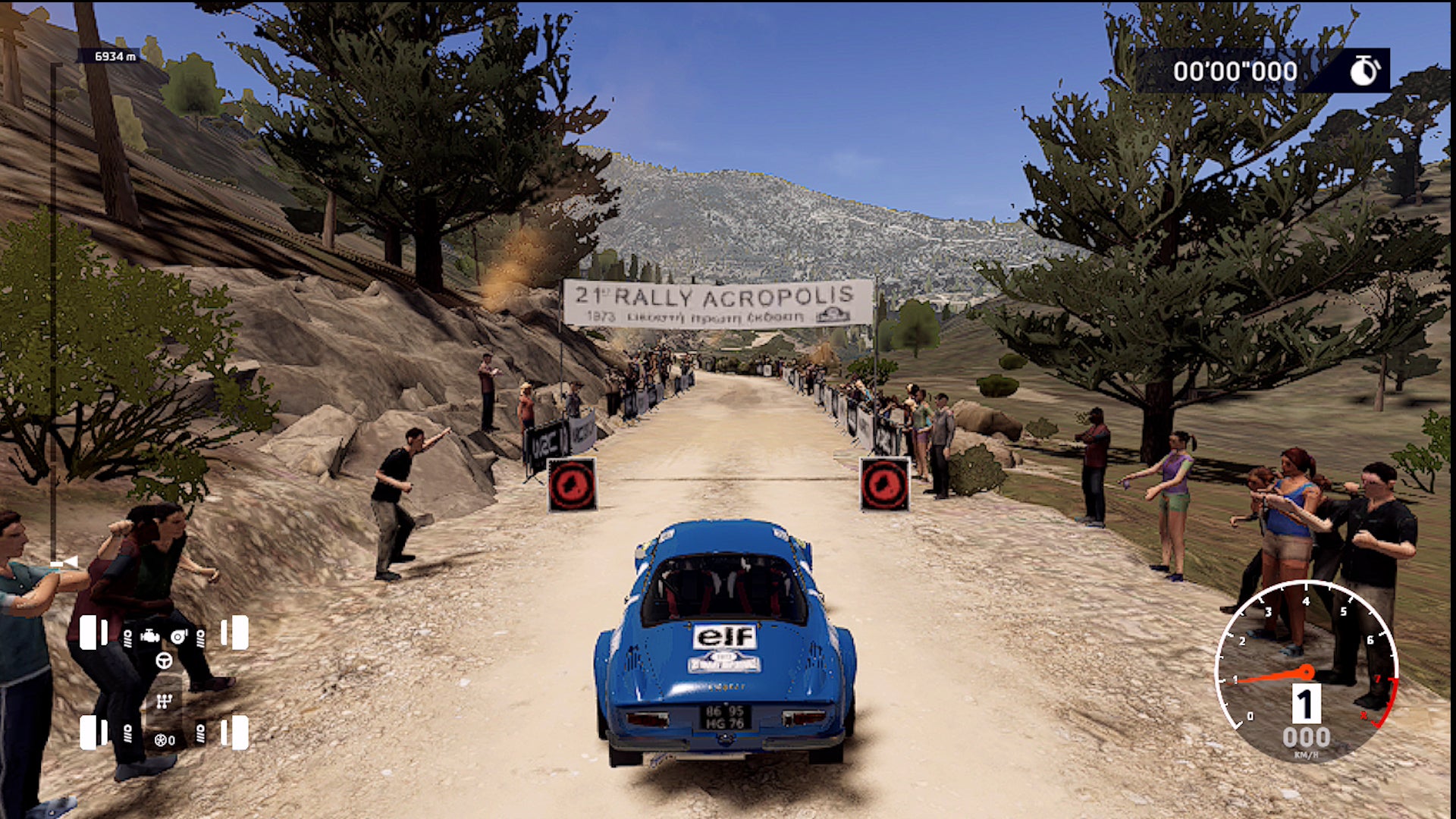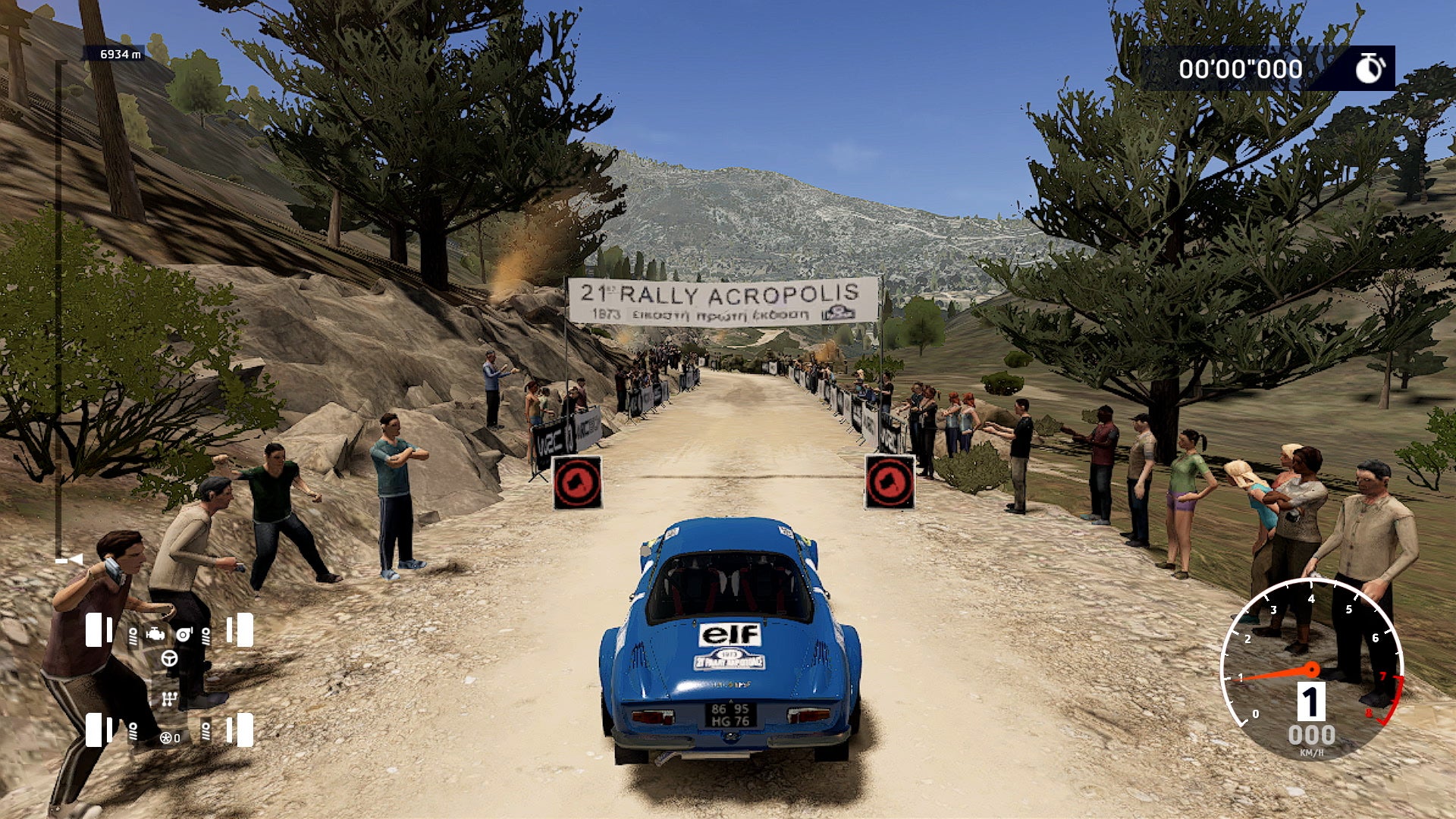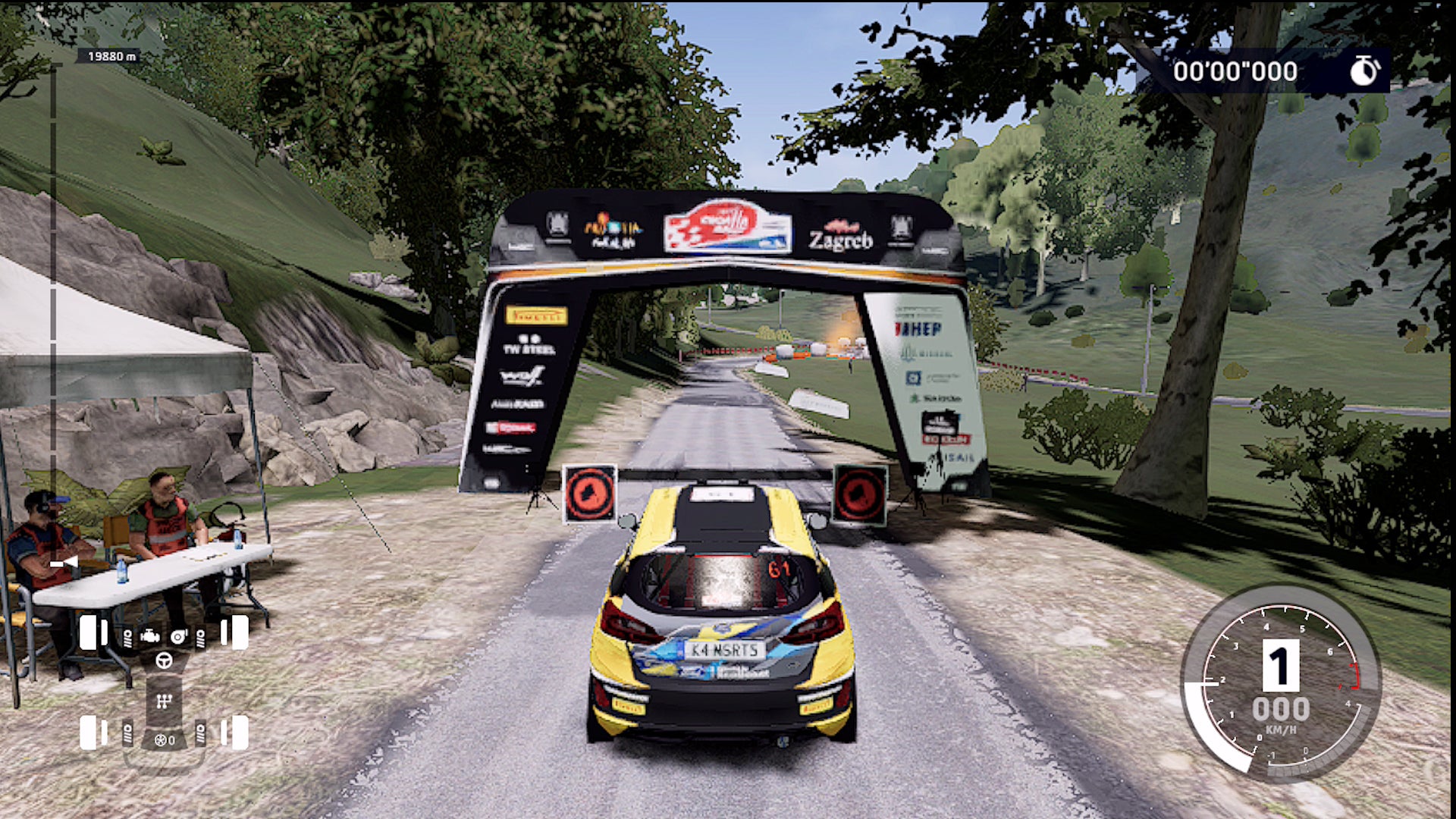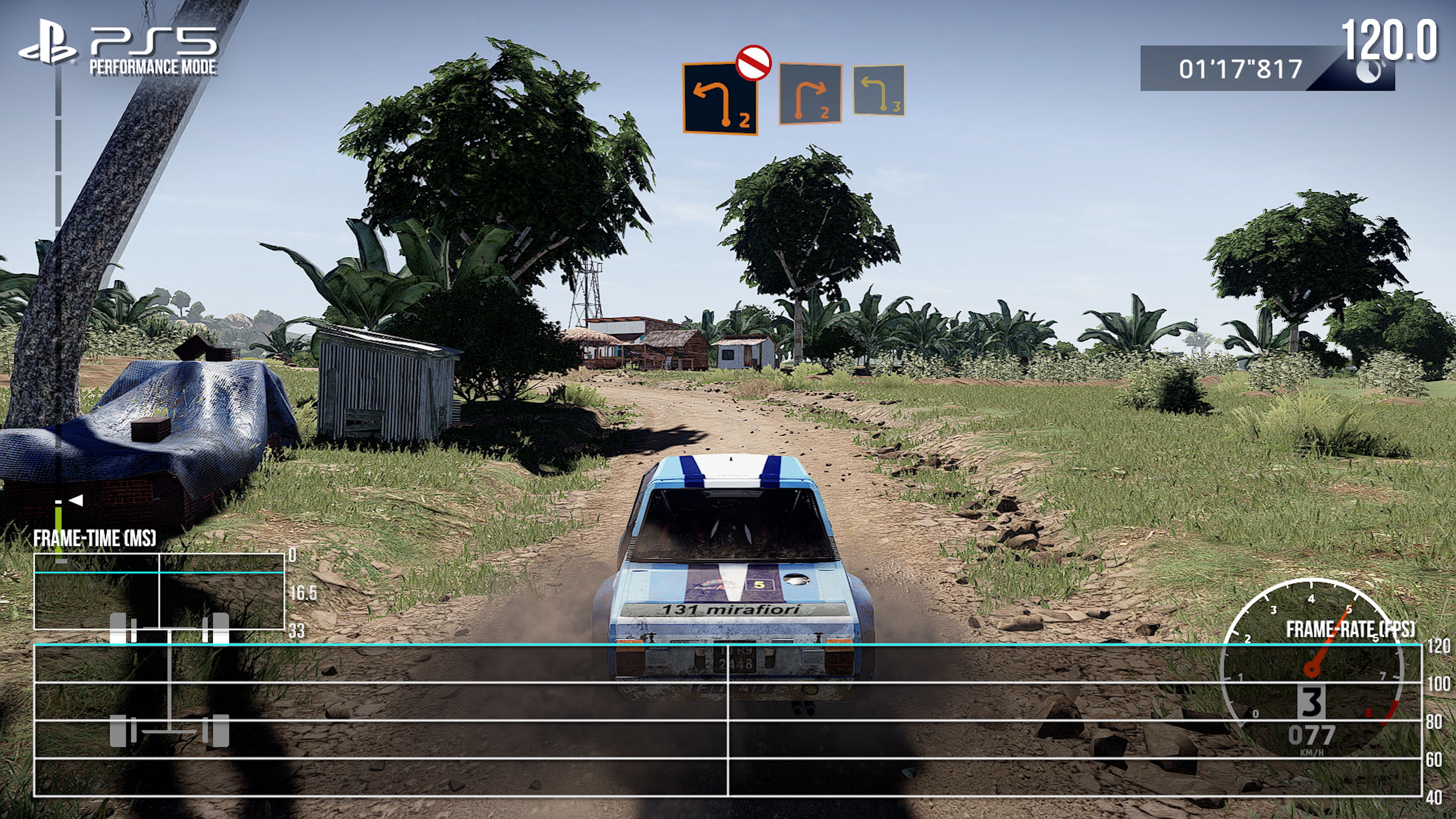First, let’s take a look at the headline visual stats. In the base PS4 release, WRC 10 runs at 1080p and 30fps, with TAA to clear up any lingering rough edges. On Switch, in order to fit into the system’s much smaller power budget, image quality is reduced to a dynamic 1600x900 for docked TV play. The full resolution isn’t often reached, with even the car exhibition mode running natively at 720p instead, and resolution drops to 1152x648 for some stages. And at 648p, the upscale to a full HDTV isn’t flattering. For portable play, resolution goes lower still to match the drop in GPU clocks, with 480p resolution typical - although a native 720p resolution is possibly achieved too. The low resolution in either mode is compounded by Switch’s lack of effective anti-aliasing to address those jagged edges - besides optional motion blur in the menus. A cut to resolution and a lack of anti-aliasing doesn’t explain the overall appearance of the game though - and it’s clear that developers Kylotonn needed to go further in order to meet their performance targets. It’s almost impossible to list out everything, such is the extent of the changes - but for a start, texture quality is dropped to the bare minimum on terrain, leaving some glaringly low resolution assets right in view. The pre-race fly-bys don’t do much to hide them. Impressively though, all of the crowds track-side are in full 3D at least. You’ll see the density of crowds is lower than PS4 overall, but still, they fully animate as you hurtle by. Just don’t look too closely at their finer details in photo mode - it all gets a little bit PS1-era. In fairness, none of this is really noticed in motion. The more eye-catching deviation is in the reflections, which take a big hit compared to the PS4 version, with screen-space reflections removed entirely. This means any stages with rain-soaked roads or big water bodies end up looking bare, with no fallback method for mirroring the surrounding scenery. Shadows are another big reason why the Switch rendition looks so barren in so many shots. Cars, trees and power lines all have shadows, though in practise they render as a flickering mass of pixels that looks rough in motion. Outside of that, plants appear without any form of shading in the distance and there’s no ambient occlusion either. Everything to the horizon looks plain as a result, almost two-dimensional rather than a realistic 3D environment. Without a doubt the biggest cutback is in the terrain itself. The extent of the chop varies by track, but the worst offender is the first tutorial stage that looks almost recognisable in side-by-side comparisons with PS4. Entire chunks of plant life are yanked out of the scene to save on Switch’s GPU headroom. Perhaps unsurprisingly, it’s this tutorial stage that gets the Switch closest to its 900p target resolution as a result. Other stages trim back detail aggressively, if not quite to the same extent. The Croatia route, for example, misses trees in the valleys ahead, while bushes and fences filling the space are stripped outright. At the very least this stage, and the Acropolis route, are identifiable as the same place between PS4 and Switch - but it’s a stark downgrade. On the plus side, far distance detail like woodlands are nicely filled out even on Switch. There’s density at the far range that completes the scene, even if it misses effects like mist and dust present on PS4. All round, it’s stunning to see how greatly WRC10’s engine scales. All signs point to a project that targeted higher-end consoles, then was pared back to the very lowest presets for Switch to hit 30fps. Pop-in is also a huge issue universally; geometry appears just ahead of the car while baked shadow maps fade in metres ahead of play. Actual polygon counts are also reduced, exemplifed by cubist-style rocky outcroppings in the Monte Carlo stage that appear much more realistic on PS4. It’s easy to pick out issues with the game’s visuals, but it’s worth bearing in mind the small triumphs achieved by the developers too. The car models, for example, are impressively detailed and amongst the best I’ve seen on Switch. Material work on each car body is well handled, with crisp, high resolution textures for liveries, lacquered over with a glossy varnish that reflects the lights above. Admittedly, car shadows and reflections are a step down from PS4, but the car body itself is nicely detailed, right down to the opaque tinted glass of the headlights, and the hubcaps. Sadly, physics deformation is greatly minimised in actual races on Switch so cars don’t crumple as impact as they do on PS4; the only changes you’ll spot are the accumulation of scratches and dirt. It’s a shame to not see the full simulation, but clearly it’s a trade that had to be made. So on the surface, the visuals take a big hit for Switch, no question - but in terms of the core mechanics and the driving model, Nintendo’s handheld is (mostly) fully featured. A proper cockpit view is included, complete with (low frame-rate) reflections in wing mirrors, windscreen wipers and your steady hand on the steering wheel. Stages take places at different times of day, with dynamic weather, and headlights work realistically to light the scenery at night. Sound quality for engine revs and the co-driver are also presented at a high bitrate. So often we see sound compressed down to distracting levels on Switch ports - notably in Assassin’s Creed games - to help reduce to game size and CPU load. Here though? Audio in WRC10 presents as crisp and clear as you’d expect, which is great. So is the Switch version playable? Visual cutbacks aside, is it feature-complete? Well, there’s no multiplayer to speak of, but the career mode and other solo modes and tracks appear intact. A more worrying issue playing on Nintendo’s handheld is the controls. Switch has no analogue triggers on the Joycons or the Pro controller, which severely limits the ability to control a racing sim like WRC 10 where you’d ideally be feathering both throttle and brake to maintain momentum around a corner. There is a workaround for this in that you’re able to re-assign acceleration to the right analogue stick - which does map acceleration correctly. With this tweak, WRC10 on Switch becomes infinitely more playable via a forward tilt, and might just work for you as well. Putting the Switch aside for a moment, I had time to check out the next-gen PS5 app too - as a quick example of next-gen support. With PS4 and Switch being limited to 30fps, the real plus point on next-gen is in the upgrade to 60fps - and even 120fps on supporting displays. In PS5’s case we get three modes: a 30fps ‘high visual quality’ mode, typically running at a native 4K. Next, there’s a 60fps ‘balanced’ mode running at a dynamic resolution - between 1620p and a full 4K, with dropped shadow quality. And then lastly we have a ‘120Hz Performance’ mode - dropping shadow settings further, and rendering at 1080p. Between all three modes the main difference really is in resolution and shadow quality. And if we look purely at the 4K 30fps quality mode on PS5, the upgrade over the last-gen PS4 mostly relates to draw distances and shadow resolution. No contest with Switch here, obviously, but again it shows just how scalable the engine is. One other major advantage for upgrading to PS5 over PS4 is in loading times. Jumping into the Monte Carlo stage, for example, takes just seven seconds on PS5. The wait is much longer on a base PS4 at ~36 seconds, while Switch eventually loads in at the 42 second mark. To be honest, loading times on PS4 and Switch are a frustration. Just to get into a race it’s quite a wait, and it takes another loading screen to get back to the menus, which is especially lengthy on Switch. So again, game load times are a huge plus for moving to the new generation. That is, alongside the leap to 60fps and beyond. Performance then: how does it stack up? Lets’s focus on Switch first. For docked TV play, all the drops to visual settings meant that performance is usually solid at 30fps. The outliers appear to be the Japan and Germany stages, which drop to 25fps or lower with too much complex geometry on-screen. Frame-pacing also becomes uneven once the performance drops. On average, most stages are playable enough at 30fps on Switch - but do expect chunks of a rally to potentially go into the low 20s as well. Portable play is an advantage for any Switch release, and for ambitious ports like this it’s a unique selling point. WRC10 running at a native 480p while portable means a heavy hit to image quality - but frame-rates are worse than with docked play. For example, at the starting line of the Monte Carlo stage we get 25fps in portable mode, whereas in docked mode we get 30fps. Playing on a small screen makes it less perceptible in motion, but it’s hardly ideal. Expect a 30fps line in most stages, but more frequent and calamitous drops below this if you play in portable mode. Jumping over to PS4 next, our prospects improve quite a bit. The 1080p 30fps target is achieved almost perfectly, with the odd spot of frame tearing if you know where to look. Moving up to PS5, on its own high visual quality 30fps mode rendering at 4K, you get perfect frame delivery with no hint of tearing. For visual purists this is a good pick - but the next mode along, the ‘balanced’ 60fps mode, is where PS5 really shines for playability. Here it’s again rock-solid, with only rare signs of screen tearing. The icing on the cake for PS5 is of course the offering of 120Hz on supported displays, which ran perfectly in our testing and is perhaps the best pick for a rally game where milliseconds count. Perhaps the solid performance here is owed to the fact that WRC 10’s built for last-gen systems as well, but it works. Now, there is screen-tearing at points, notably around the Japan Shitara stage - but other than that the high performance mode delivers in spades. Clearly WRC 10 is a stretch for Switch’s capabilities, and that’s fine - at Digital Foundry we’re big fans of ambitious ports, even when they go a bit wrong. We know going in none of these will be the premiere experience, but these games still impress for just existing on Nintendo’s handheld. Despite its cutbacks, WRC 10 gets a lot right. Performance is generally acceptable, at 30fps on most tracks, and car detail and on-track handling translate surprisingly well too. The absence of multiplayer modes is a shame, but the core mechanics for a race are here. For all the visual downgrades - and they are severe in places - the result at least appears to put a priority on 30fps performance. So is it as bad as people say? Visually speaking, absolutely. WRC 10 is very rough in places. More so than many ports to Switch, the end result is wildly uneven with rough textures, noticeable pop-in, low-grade meshes and blocky shadows. Some tracks look acceptable next to PS4, but others are unrecognisable. In every case, there’s also a general disconnect between the high car detail and the murky fidelity of the terrain itself. Especially on a big screen it’s hard to accept the barebones look of most tracks. Overall, I’d be hard pressed to recommend playing WRC10 with Switch connected to a TV - it’s too far removed from the baseline quality on console. There is, though, redeeming value in playing in portable mode. The resolution is low at around 480p, the frame-rate drops at times, but you’re still getting a fine rally experience on the go. With a tweak to the frankly nearly unusable default controls, there is a game worth playing here. Mechanically, WRC10 is sound on Switch then, but its visuals could use a serious tune-up.
